Our Crémant – a photo journal, October review
Posted by Gavin Quinney on 31st Oct 2022
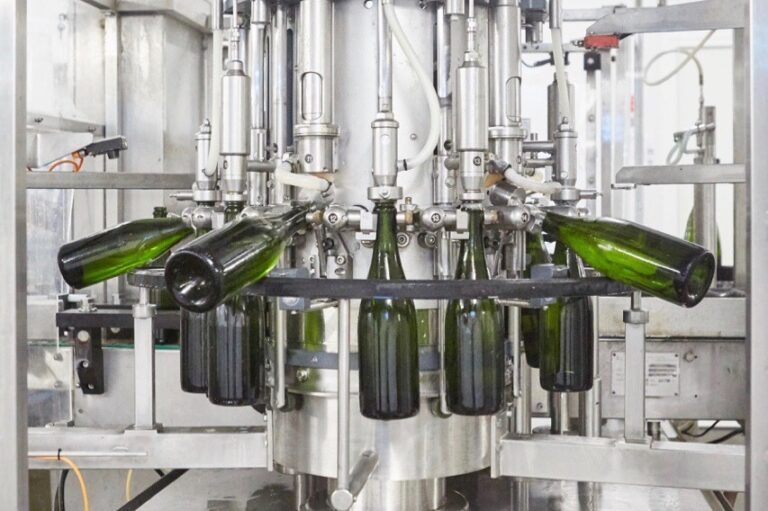
Here's our monthly review. Well, not exactly a recap of what's happened this month (where to even begin?) but we finally packaged up our sparkling 2019 Crémant de Bordeaux and shipped it to various staging posts before onward delivery to our customers' homes.
Crikey, the 2019 harvest seems a while ago - though fresh in the memory - so we thought we'd put together a photo journal of the wine. There is quite a story behind it.
We’ll release this delicious Blanc de Blancs for delivery in the UK with an email this Thursday.
All the best
Gavin & Angela Quinney
Our Crémant – a photo journal
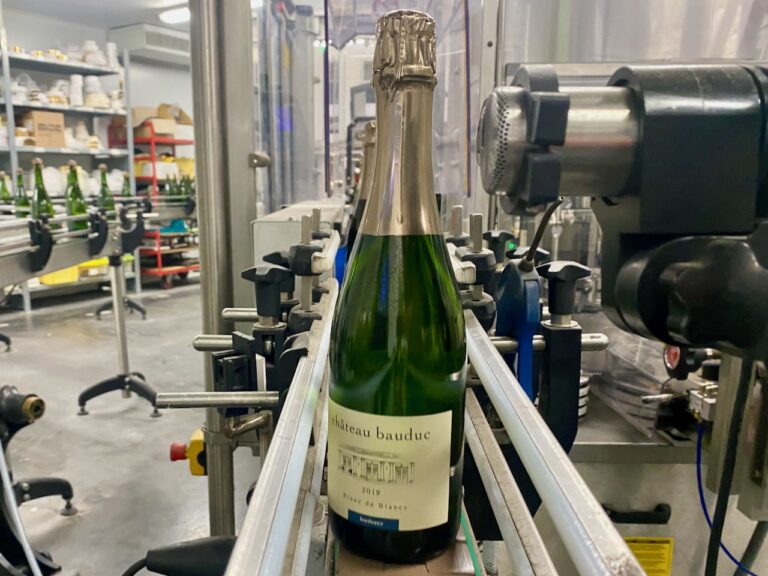
On the face of it, it’s just another bottle of wine off the production line.
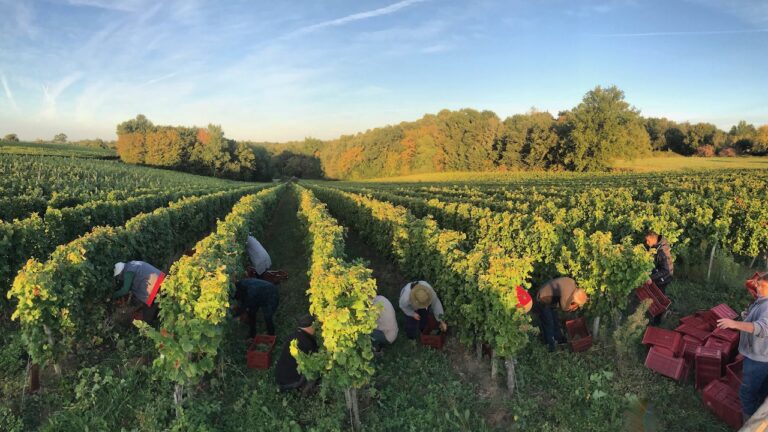
Here was the start of the harvest of the grapes for the Crémant in September 2019.
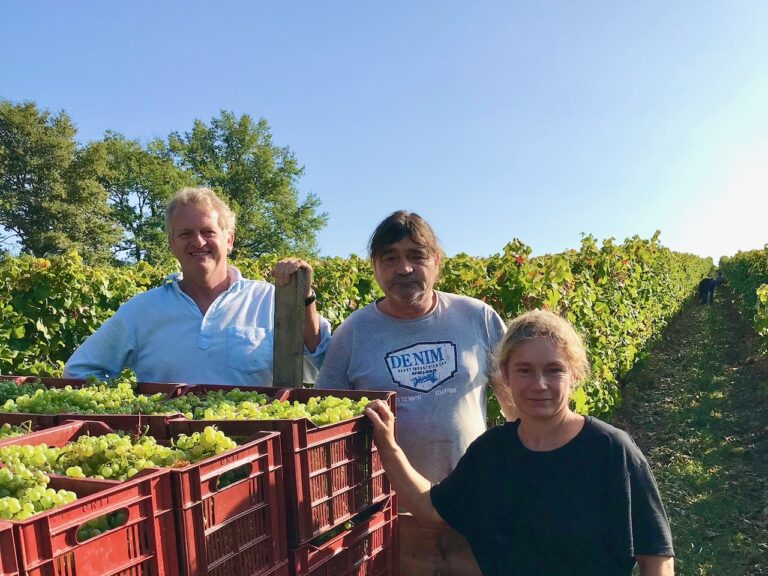
2019 was our 20th full vintage at Bauduc, all of which have been with Daniel and Nelly.
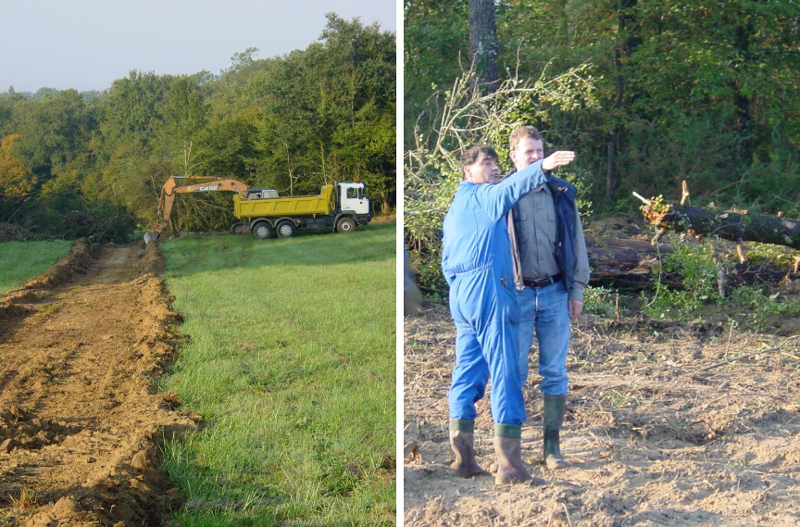
The vineyard for the Crémant started life in October 2003, with a somewhat younger Daniel explaining something to his fresh-faced patron.
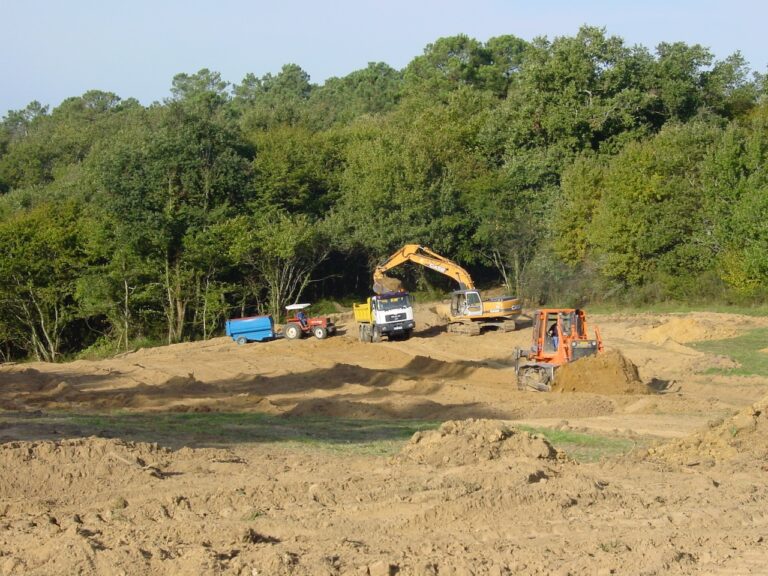
We had the rights to plant a hectare of vines in a corner of the vineyard which was in the designated Appellation Contrôlée zone. (You can’t just plant where you like.)
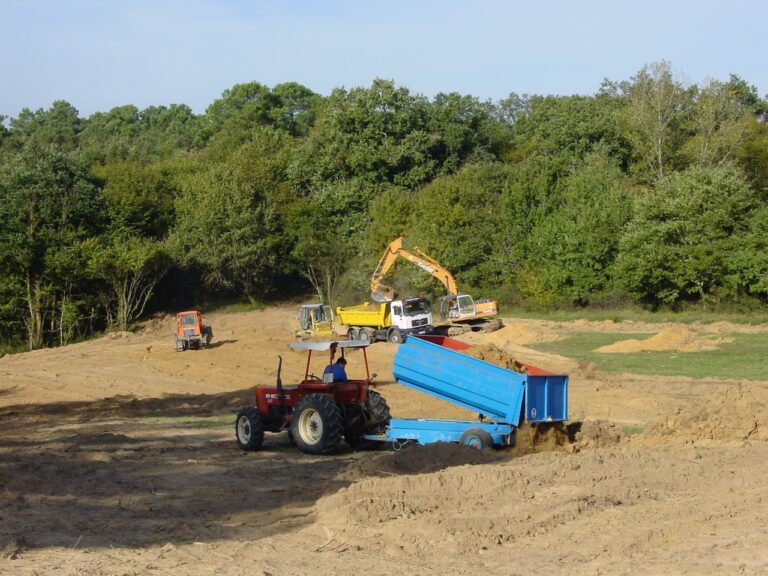
The topsoil needed spreading more evenly around the parcel, taking the richer topsoil from the lower end of the slope and spreading some of it to the more gravelly, poorer parts.
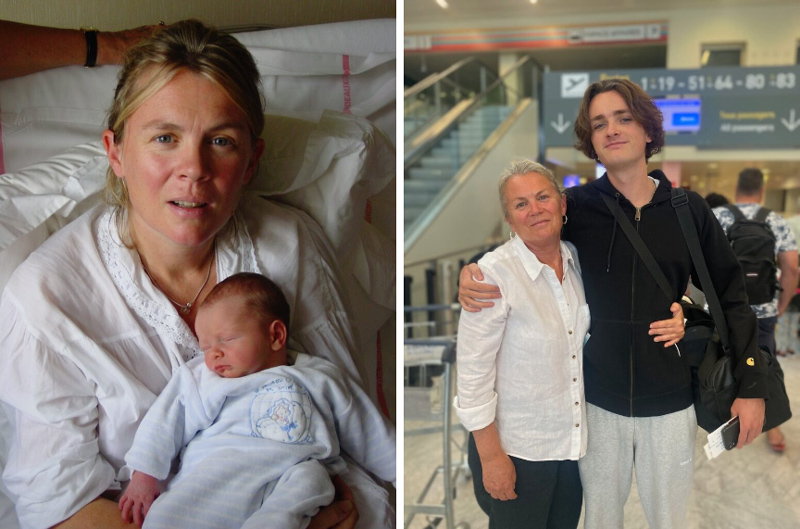
October 2003 was a busy time and not just because of the new harvest and preparing land for new vines. Tom was born on 11 October and here he is with his mum, and again last month saying goodbye to Ange as he flies to Montreal in Canada to study at McGill University.
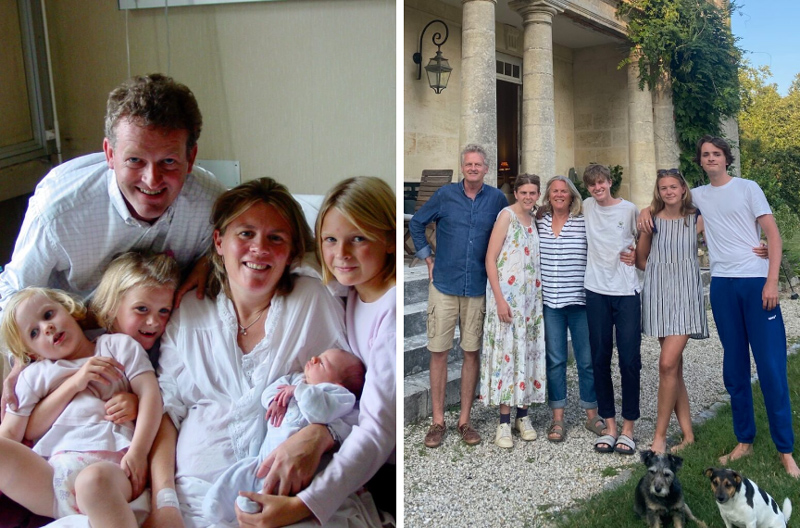
Come to think of it, October 2003 was a busy time. With only Sophie living at home now with mum and dad, it’s a rare treat when we can all get together.
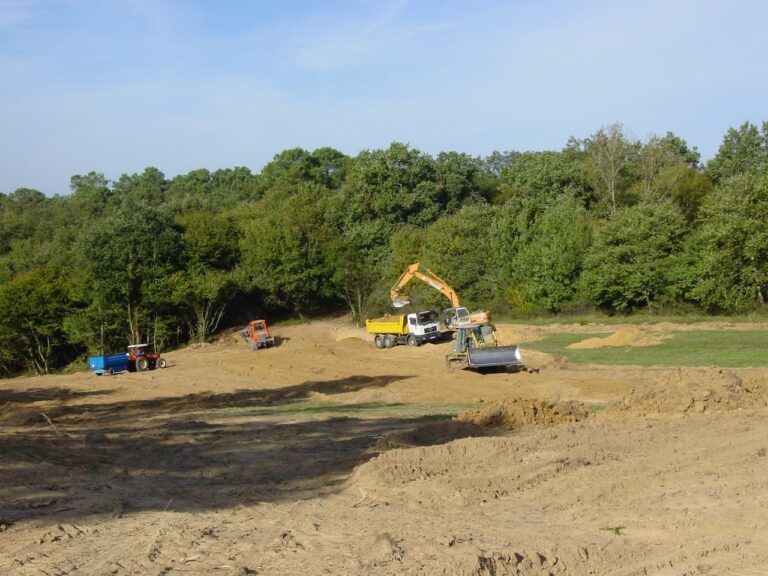
The new vineyard taking shape, mid-October 2003.
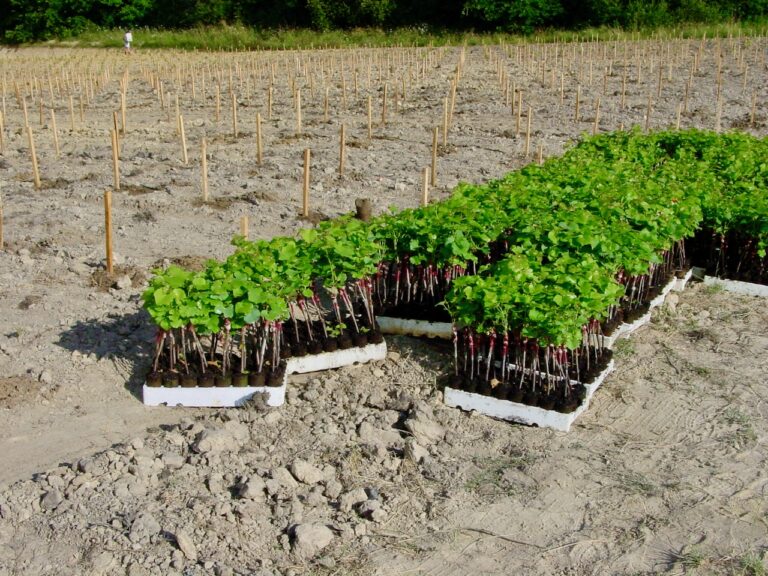
We planted the parcel the following year in June. A good choice of vines, rootstock and an understanding of geometry are just some of the key elements.
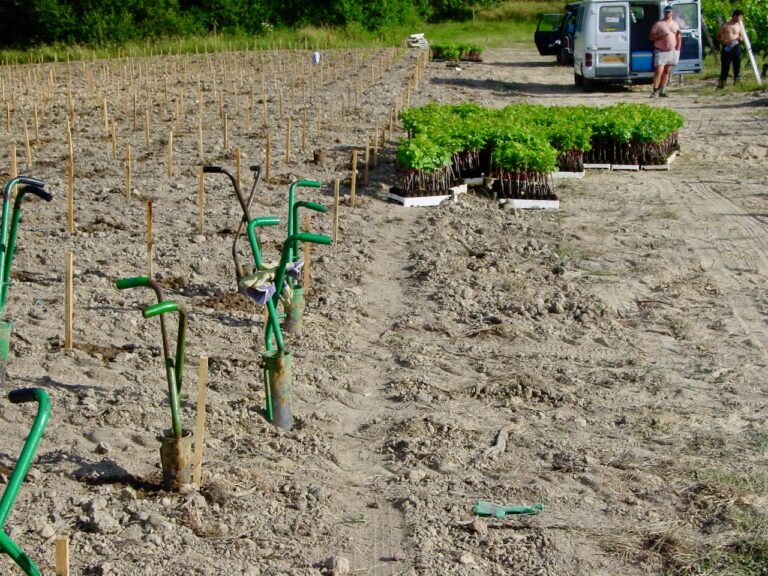
Fledgling Sémillon vines and some fairly crude equipment for making the holes in the ground.
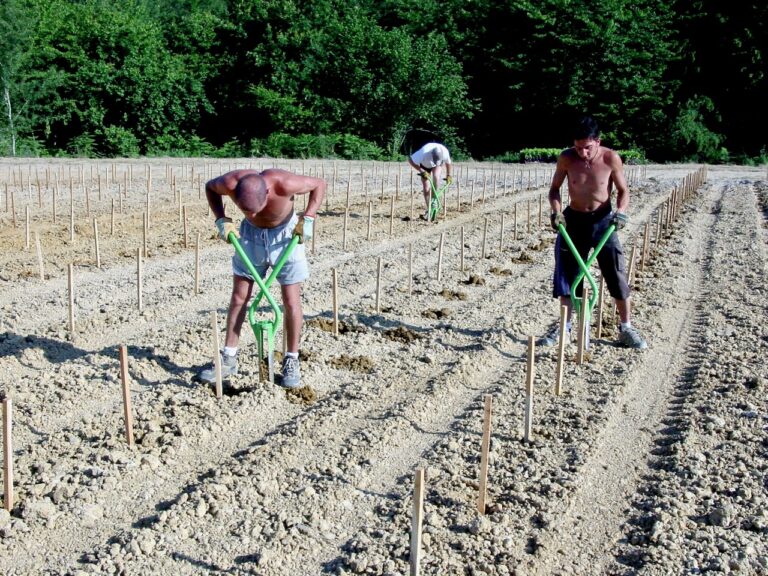
The traditional way of planting young vines can be really hard work. Nowadays it’s common to use automated machinery and GPS.
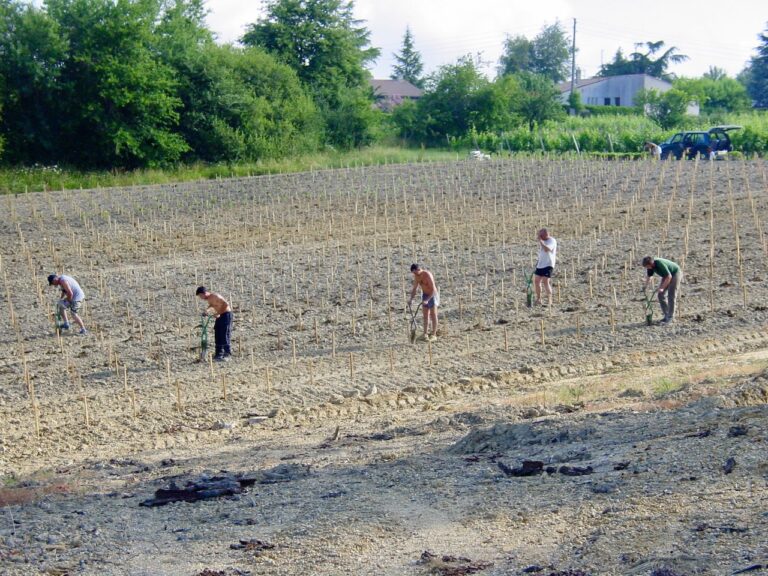
The vines were planted fairly densely at 1.8m between the rows and 1m between each vine. That’s about 5,550 vines a hectare, for what it’s worth.
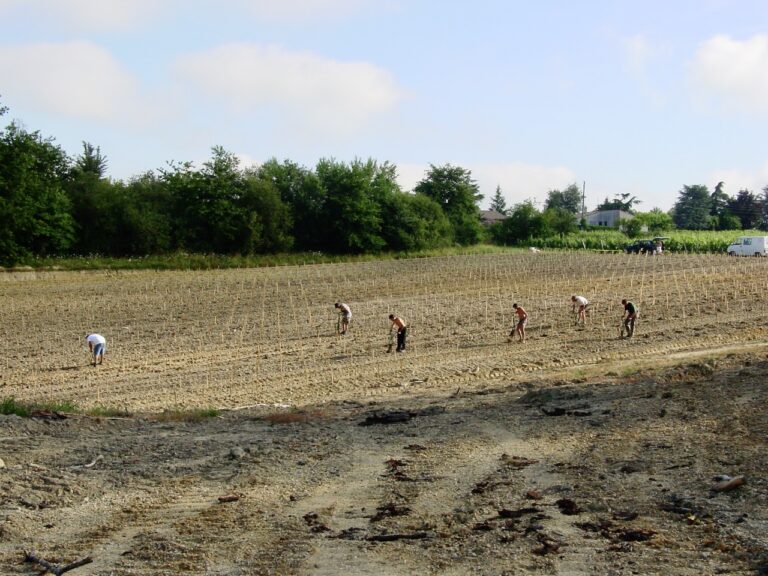
The decision over what to plant is made easier, in some ways, by strict Appellation rules. The two main white varieties for Bordeaux are Sémillon or Sauvignon Blanc.
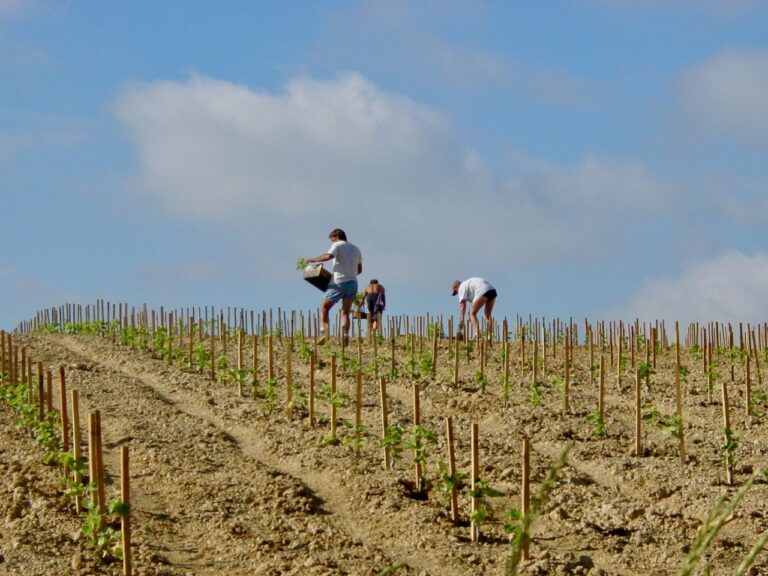
We planted some Sauvignon Blanc that year as well.
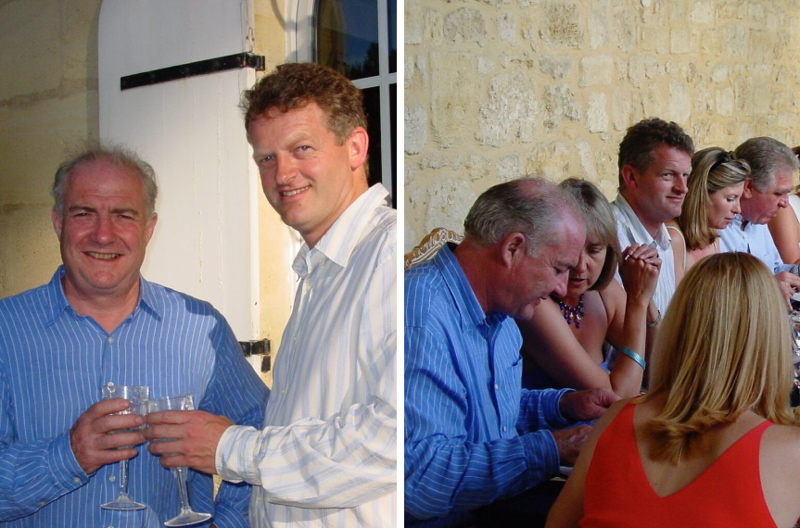
Which was just as well because Rick Stein was buying increasing amounts of our Bordeaux Blanc by June 2004. He was in Bordeaux that same month that we were planting the white vines. (The three lovely English ladies at that dinner all have homes in the region, as does the better half of Les, at the end, who is greatly missed.)
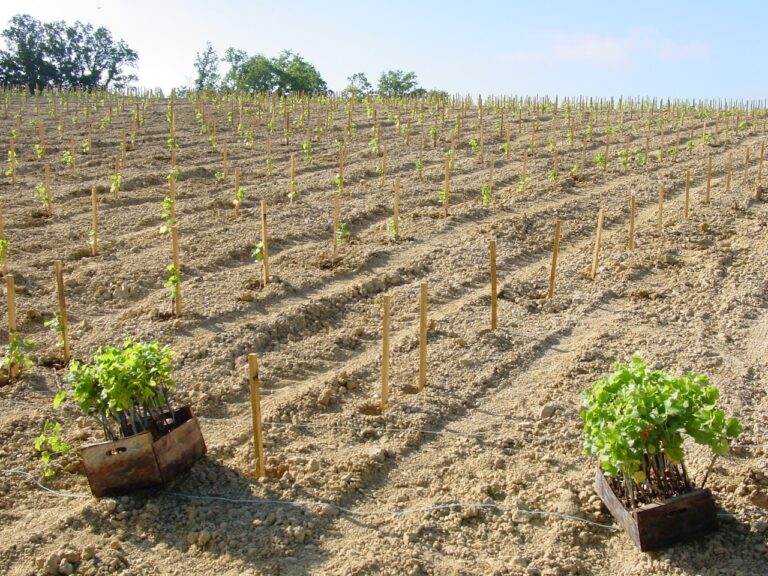
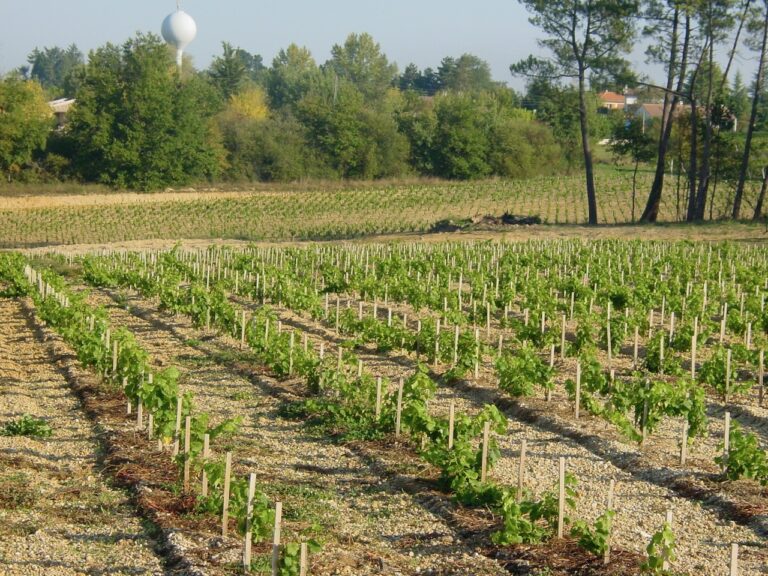
The summer of 2004 was relatively rainy, which was good for the new vines (September 2004).
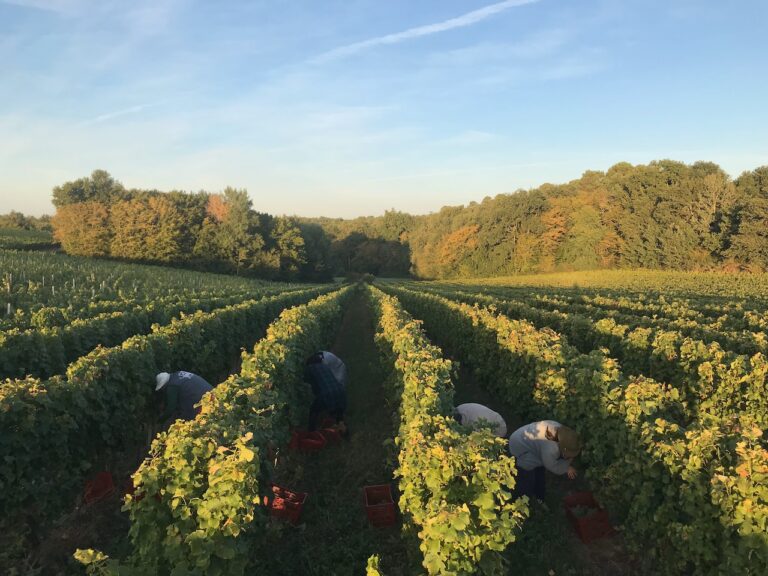
Exactly 15 years later and the vineyard looked like this in September 2019.
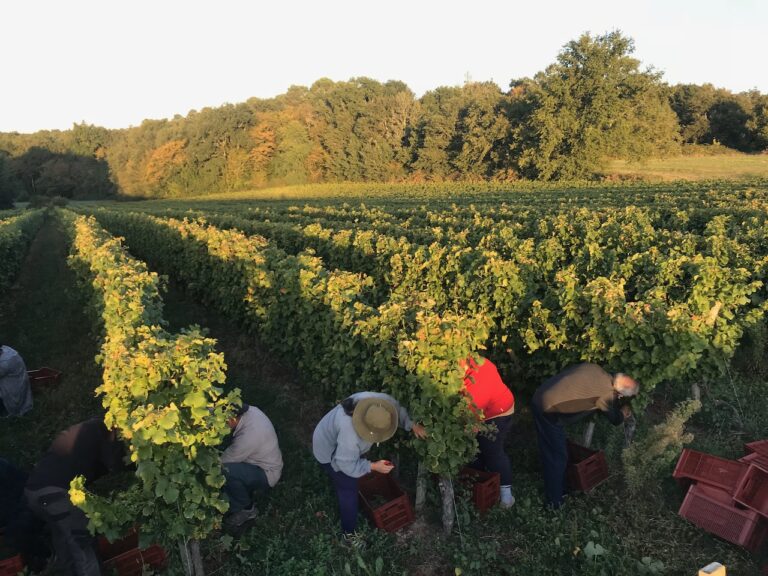
Field of Dreams? I’ll come back to that in a minute.
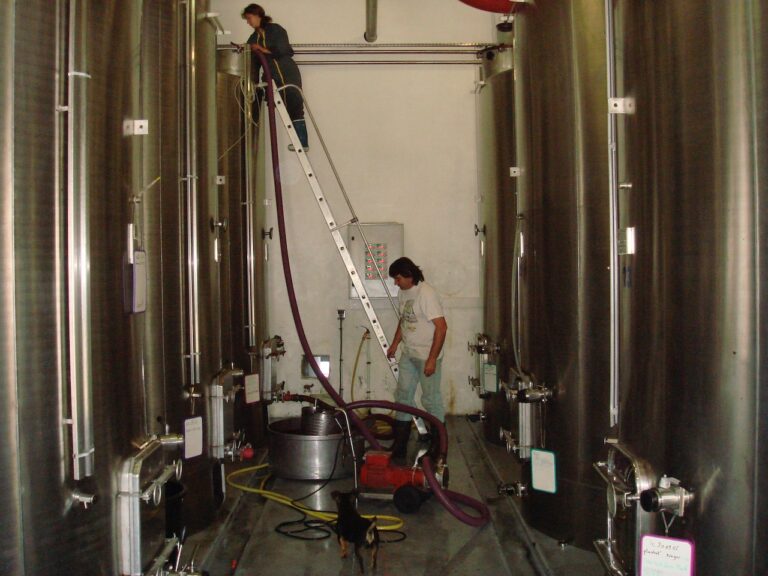
Daniel and Nelly back in the day when the vines were being planted.
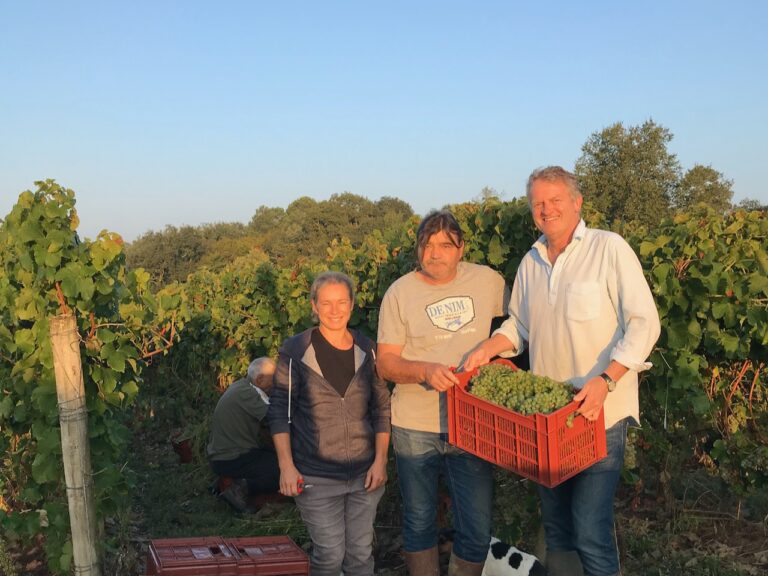
Here they are with the fruits of their labour for the Crémant many years later – quite literally.
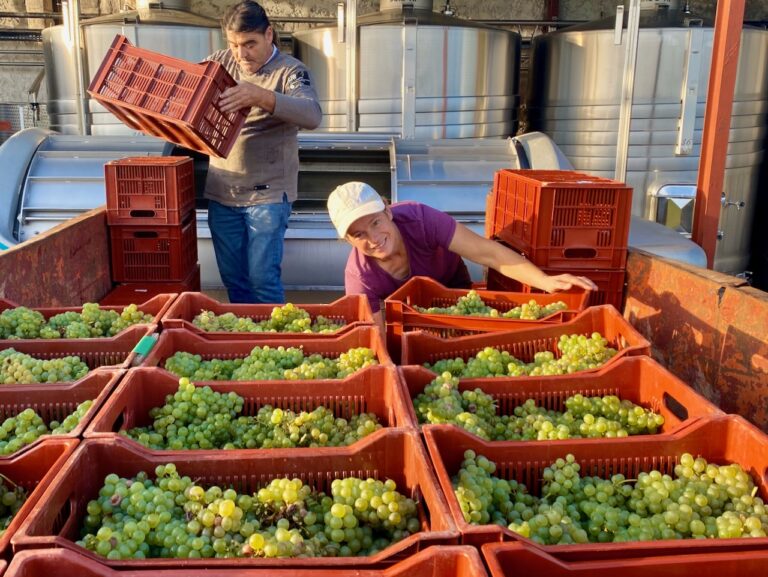
Daniel and Nelly loading the Sémillon grapes into the press.
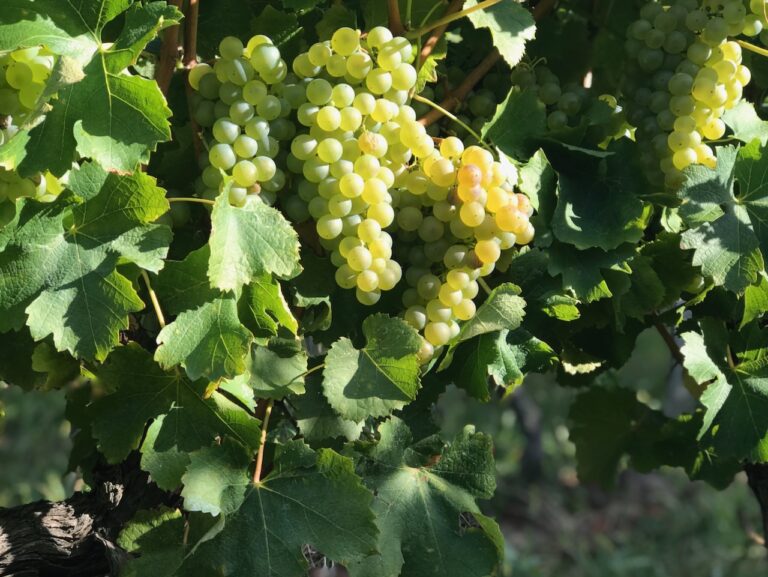
2019 saw a lovely crop – good yields and healthy bunches. All the following photos are of the 2019 harvest.
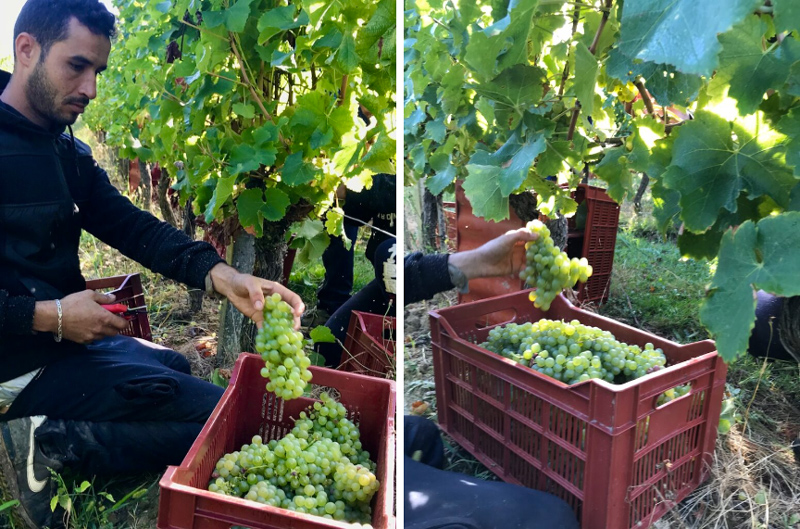
By law, the grapes for Crémant – from any designated region around France – have to be hand picked and the bunches placed in stackable crates. As here in 2019.
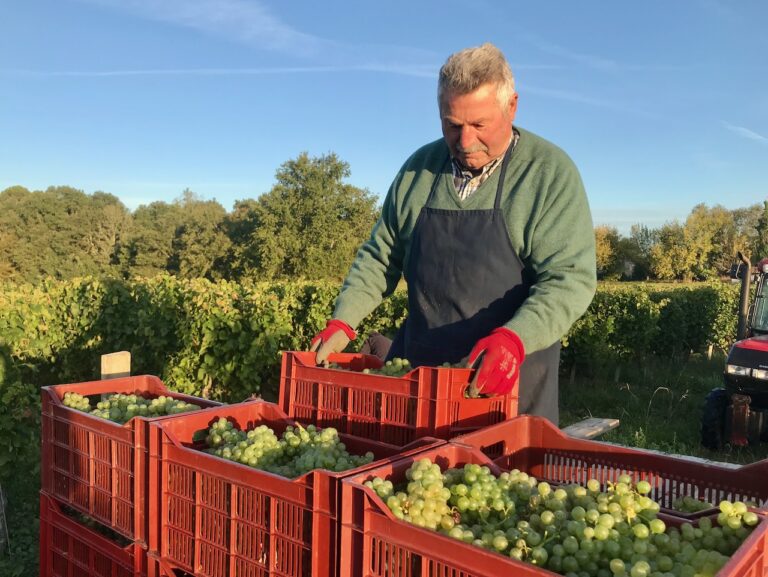
Pappy, or Michel to give him his proper name, arranging the cagettes.
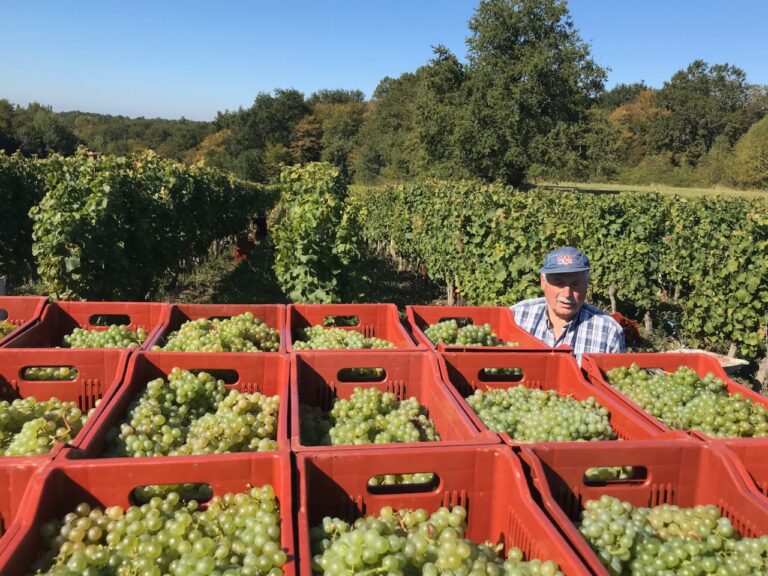
The idea is that grapes for Crémant should go into the press in whole bunches, un-squashed.
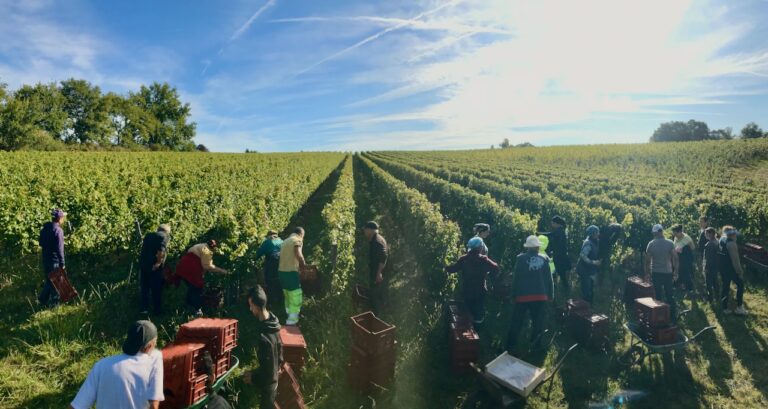
In 2019, as usual, we had a large team so we could bring the grapes in swiftly and efficiently.
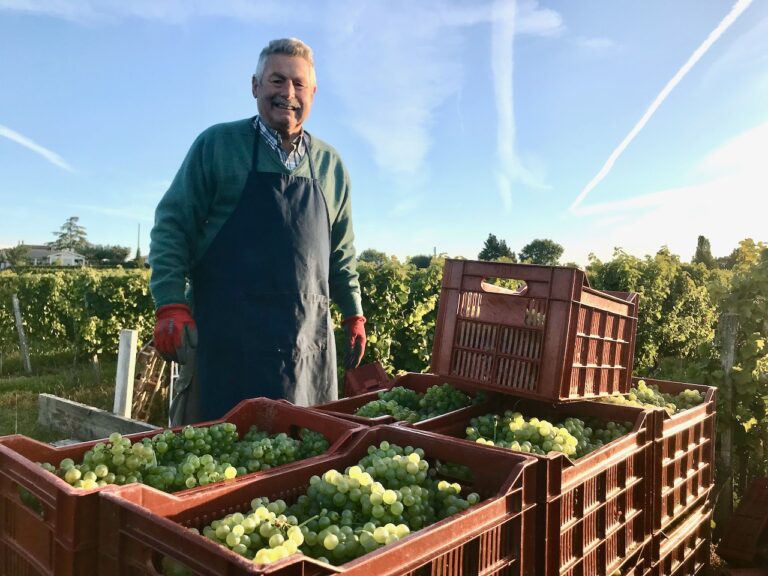
Michel was 86 years young then.
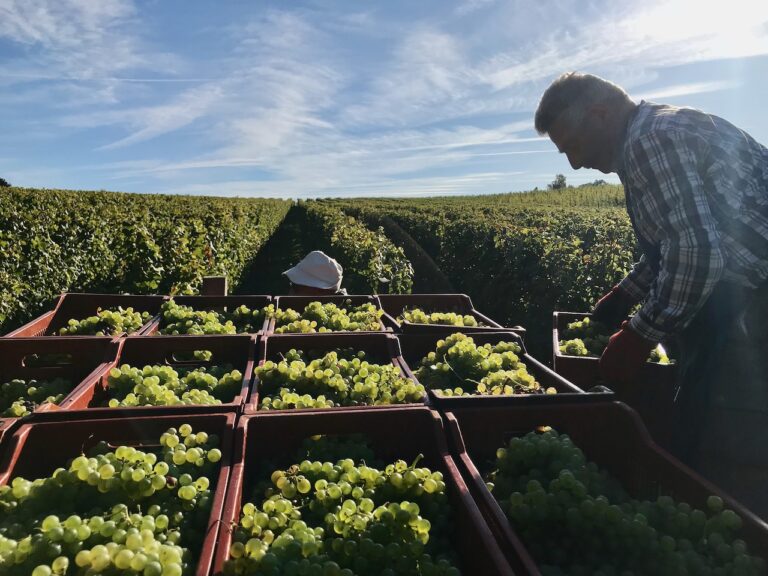
I see Michel quite regularly but he finally retired from lifting crates during the harvest at Bauduc in 2022.
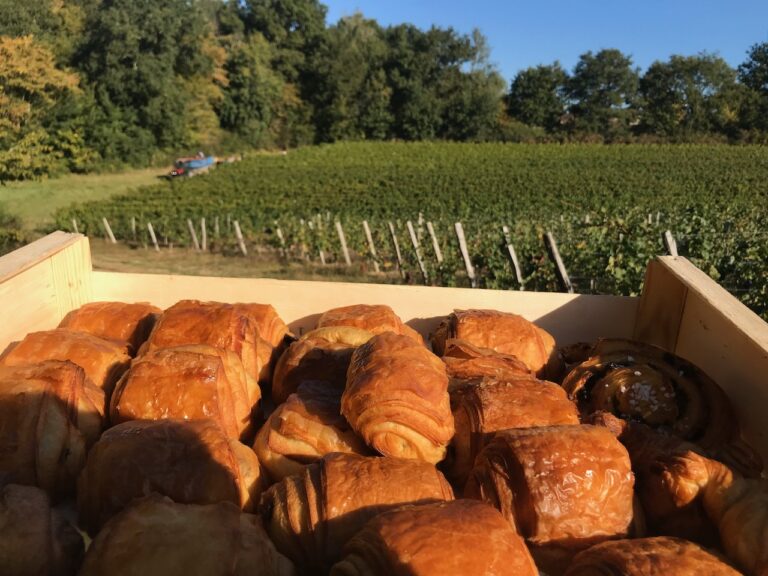
The important and traditional role that I had in 2019, as with every harvest, was to buy and distribute the chocolatines (pains au chocolat).
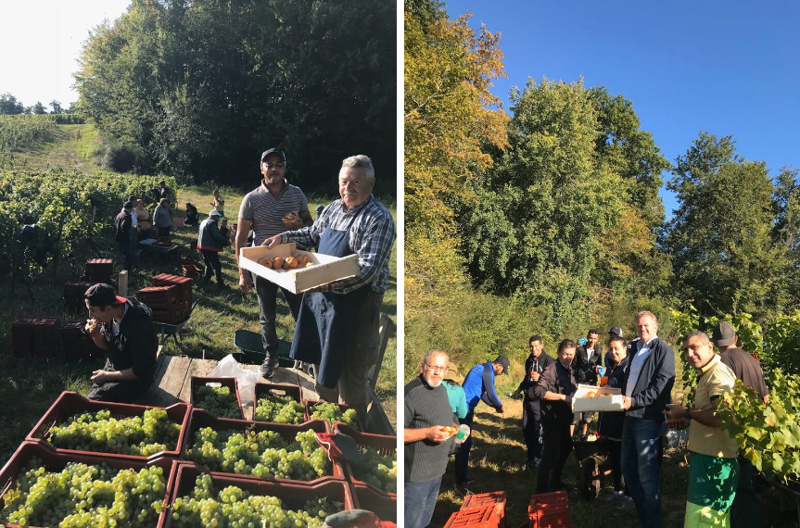
By mid-morning everyone needs refuelling.
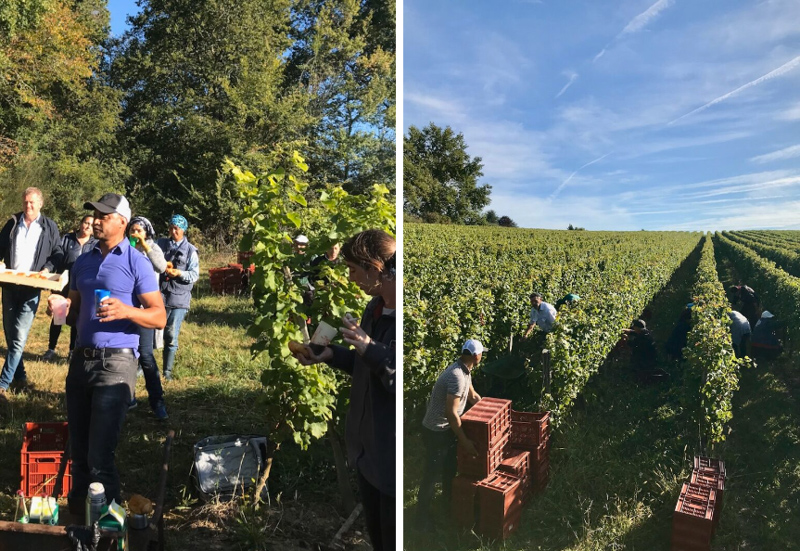
After all, the rows of vines are long.
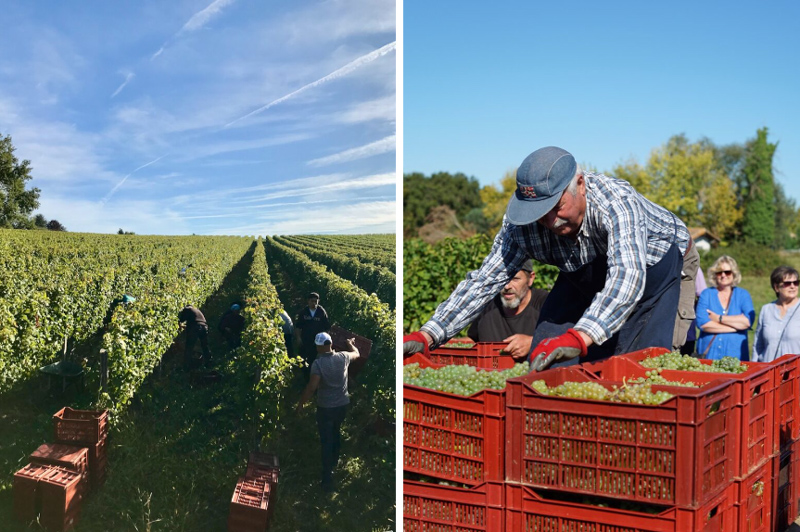
Pappy being especially diligent with an audience.
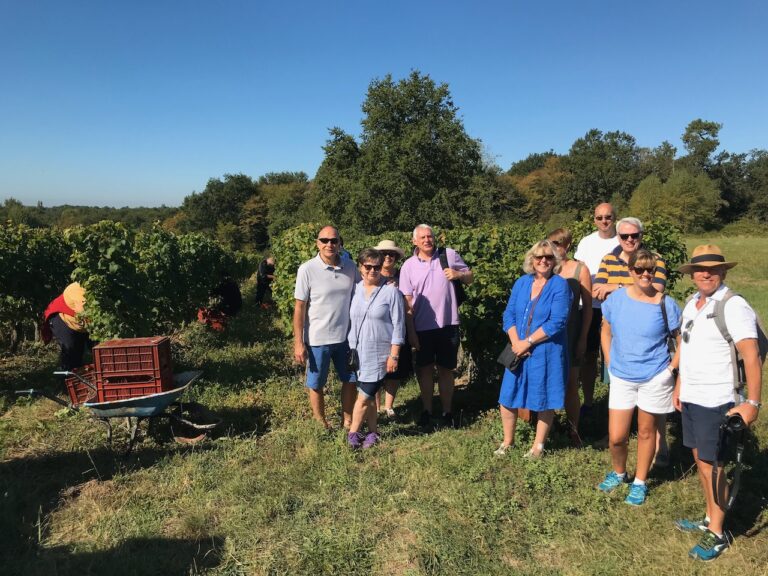
Of course, the 2019 harvest was before the pandemic, so there was no shortage of visitors. Paul here was kind enough to send me some photos:
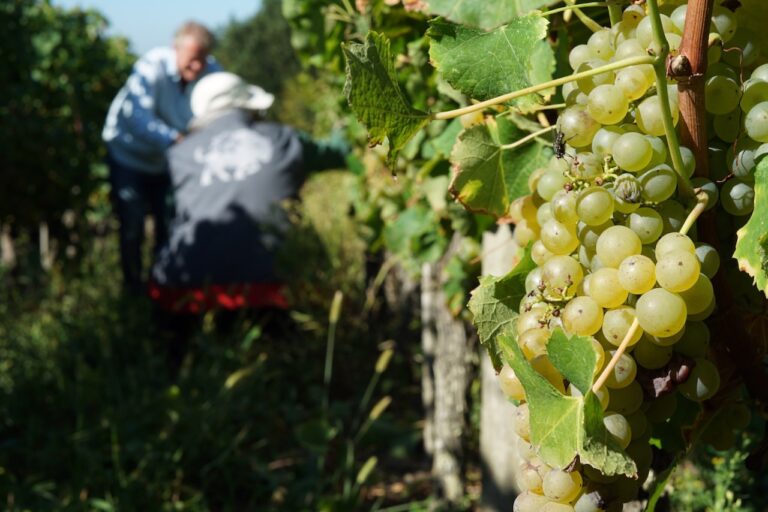
The 2019 harvest. I think I was handing a plaster to someone who’d cut their finger.
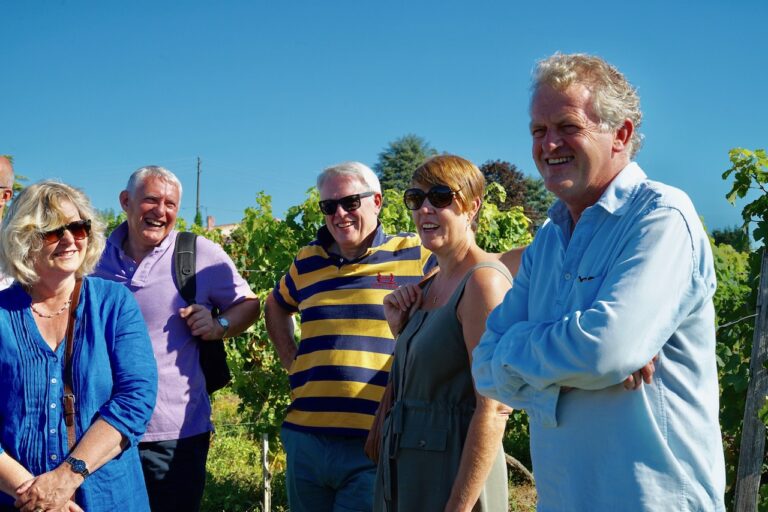
If you visit vineyards with friends, it might seem obvious but do take photos of them as well as the vines or the winery.
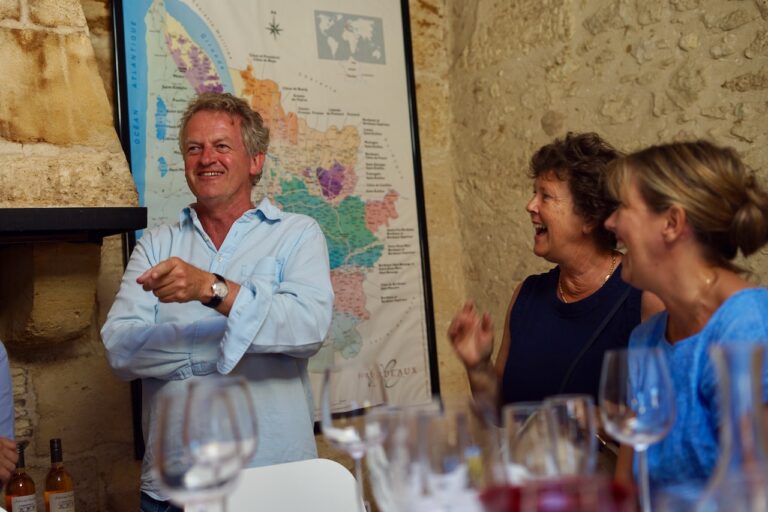
Wine tastings should not be taken too seriously. The harvest team had stopped for lunch.
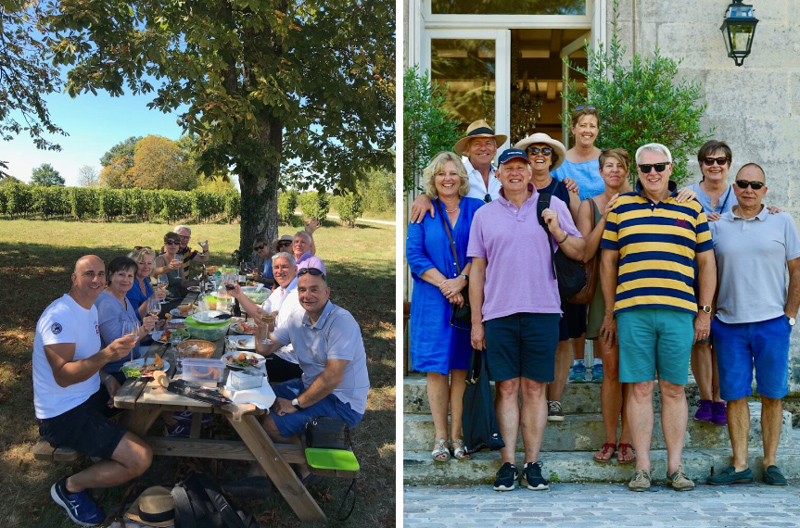
A picnic and posing on the steps of the château.
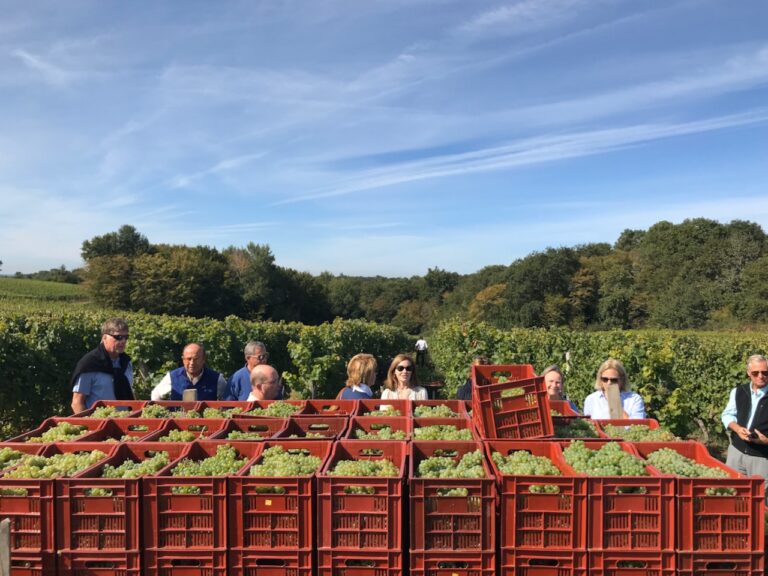
‘If you build it, he will come’ from Field of Dreams (1989) is one of the most famous lines from a movie. Any connection with a vineyard is questionable, I reckon, but we did have some charming visitors from the USA during the 2019 Crémant harvest.
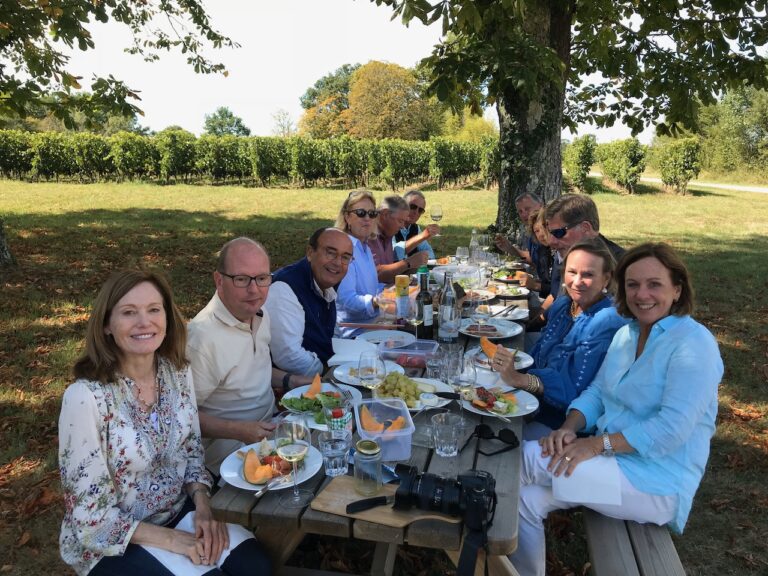
We trialled picnics in August and September 2019 but had to cancel an order for several more outdoor tables the following March.
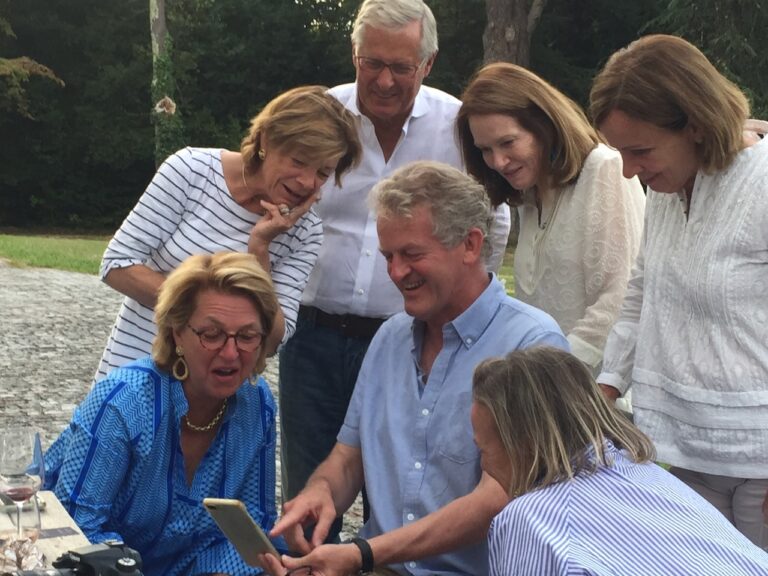
I was grateful for this photo from one of our American guests as it is rare for someone else to show interest in anything on my iPhone.

More Brits abroad during the Crémant harvest.
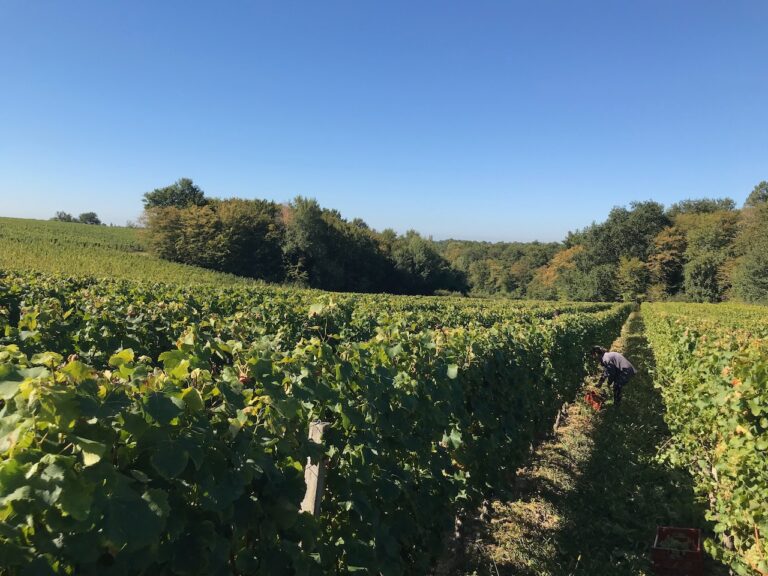
It might all seem like a sociable time but working in the vines can be a solitary affair.
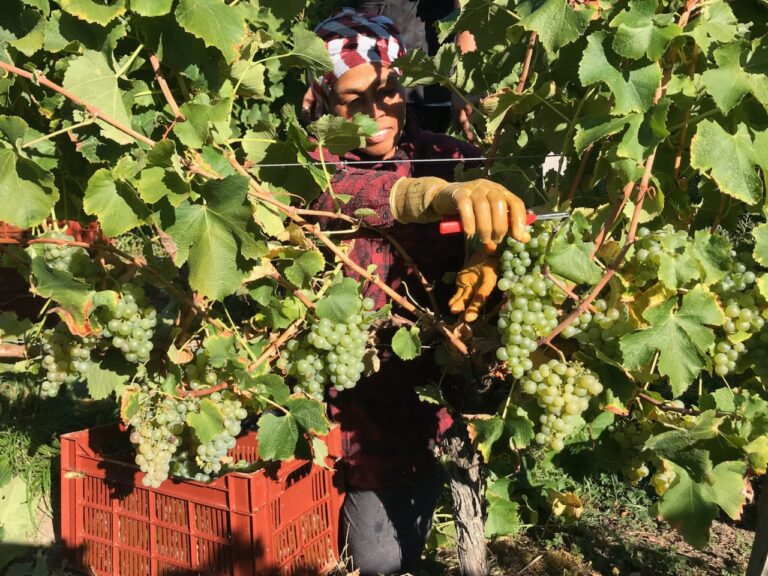
There was a generous crop in 2019.
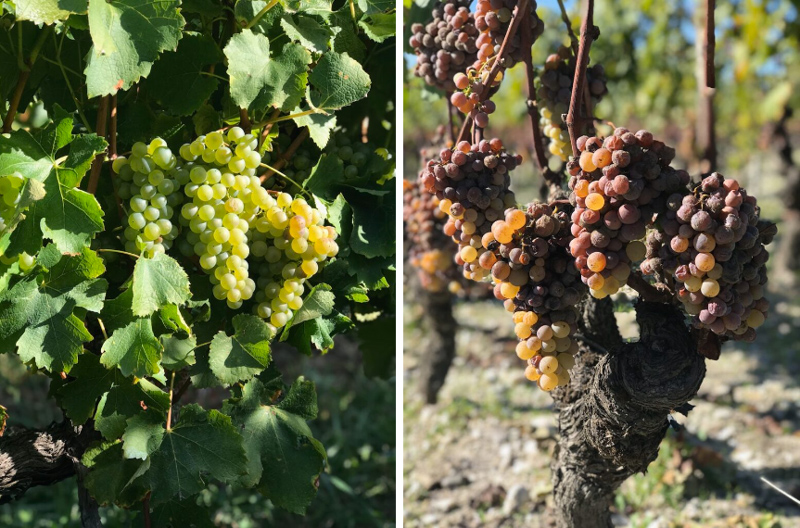
Sémillon is well suited to three styles of wine – dry white, like Les Trois Hectares, for Crémant, and for sweet wine when the ‘noble rot’ sets in. Here are two shots of Sémillon in 2019 – ours for our Crémant on 11 September and again at Château Suduiraut in Sauternes a month later.
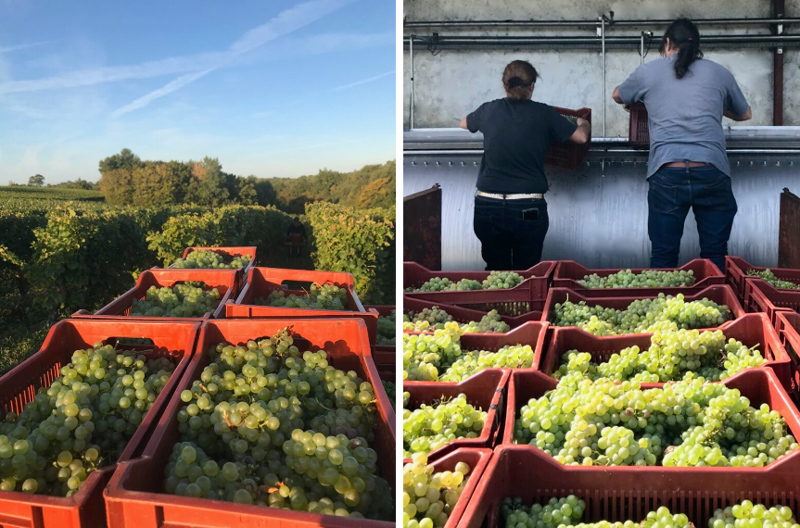
Getting the grapes to the press without stress. Nelly and Daniel and the 2019 crop.
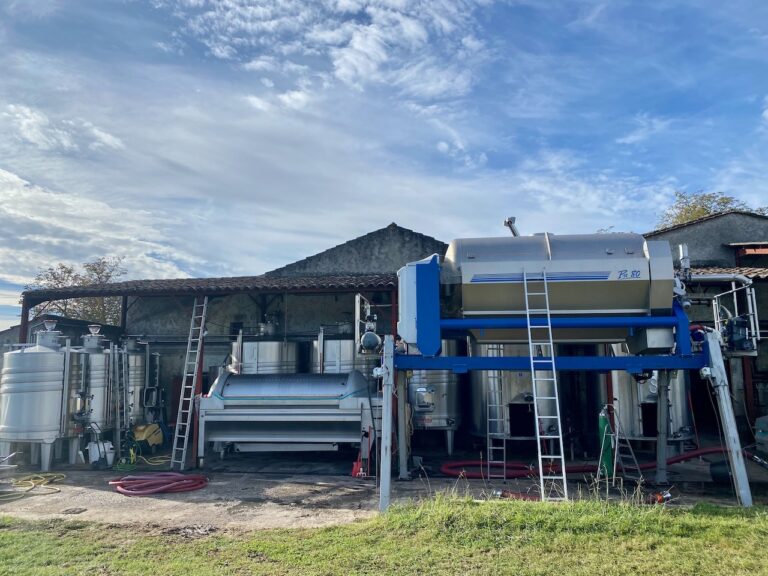
Nowadays we have to hire a second press.
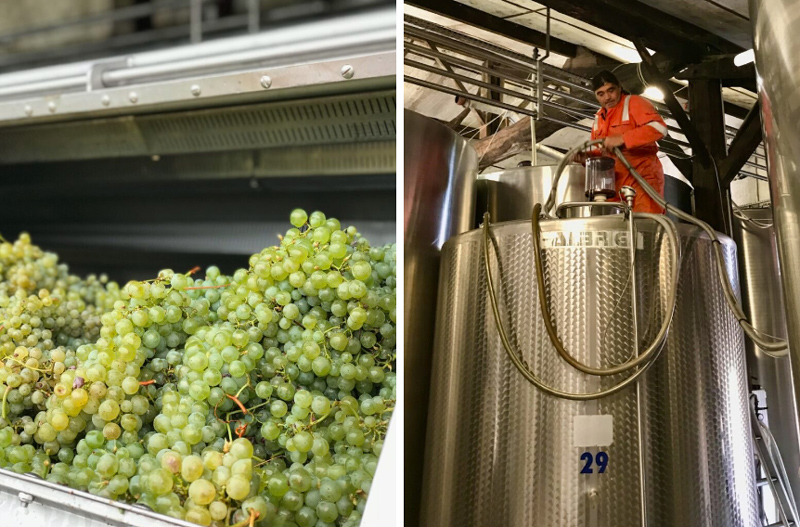
Once the grapes are pressed, the juice is cool fermented in a stainless steel vat. It helps to start with grapes which are ripe but are not too high in sugar and have good acidity.
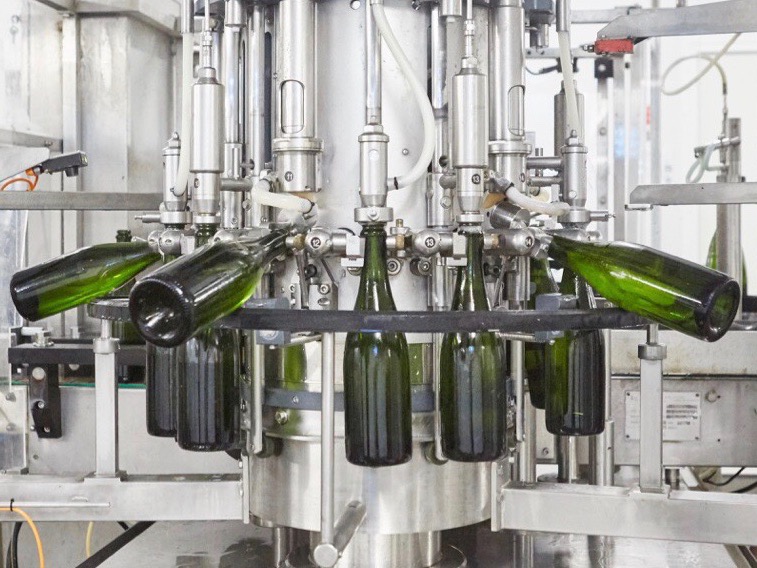
A traditionally made sparkling wine undergoes a second fermentation in bottle.
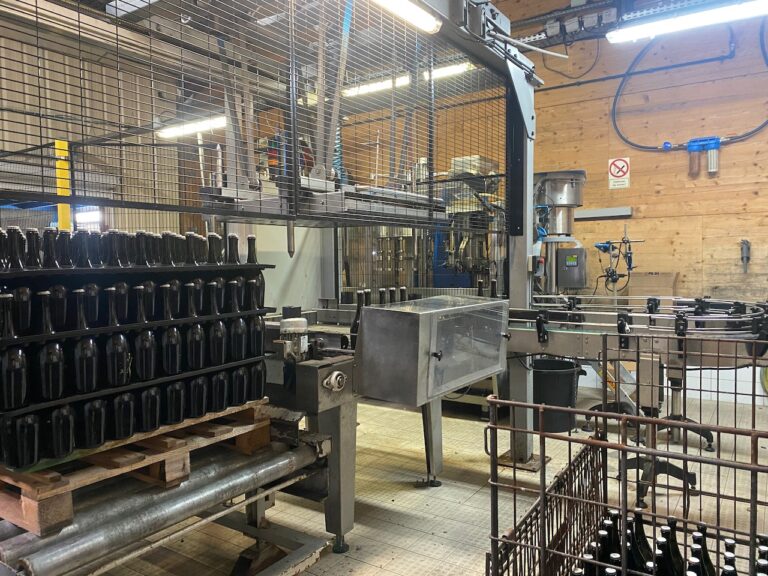
Yeast and sugar are added to the wine for that second fermentation in the bottle. The bottles are sealed with a crown cap at this stage, not a cork or equivalent.
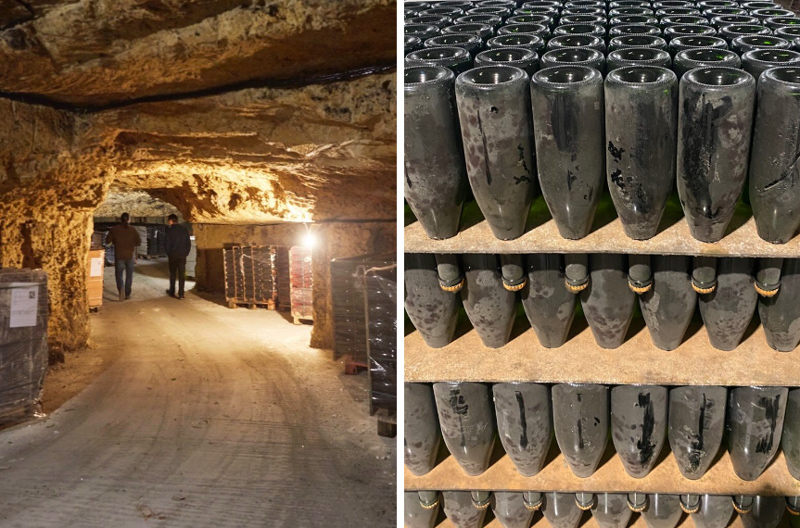
Crémant ferments in bottle at 14ºC and we have to take the wine to special cellars about five miles away from us. It’s then a long, slow process for the yeast to munch on the sugar and create alcohol and CO2. Eventually, the yeast cells settle as sediment and we leave the bottles for slightly longer than the norm to gain a bit of weight.
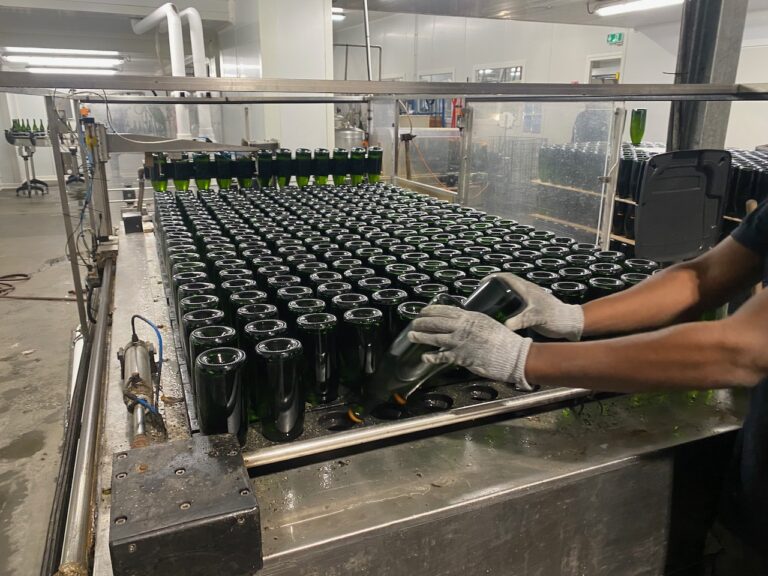
The fiddly bit is the dégorgement or disgorging of the wine. That’s when the sediment from the second fermentation in the bottle is removed, a little top up applied and a cork shoved in.
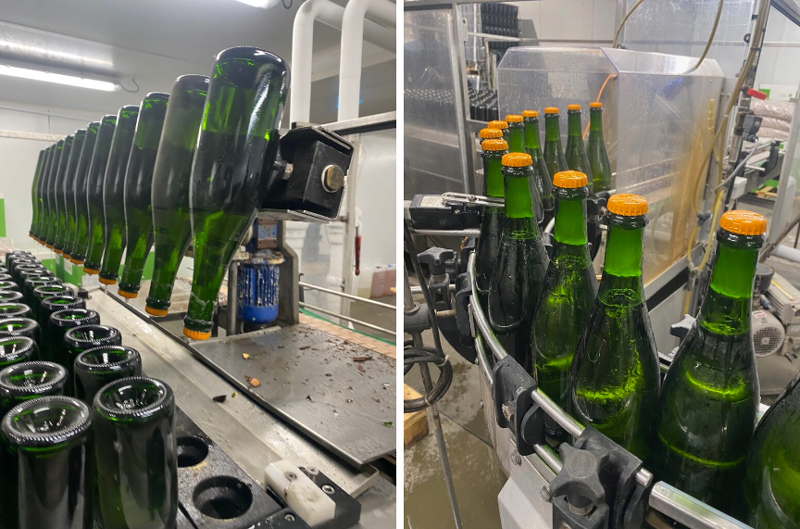
The bottles have their necks frozen swiftly and the sediment is in the frozen nugget under the crown cap.
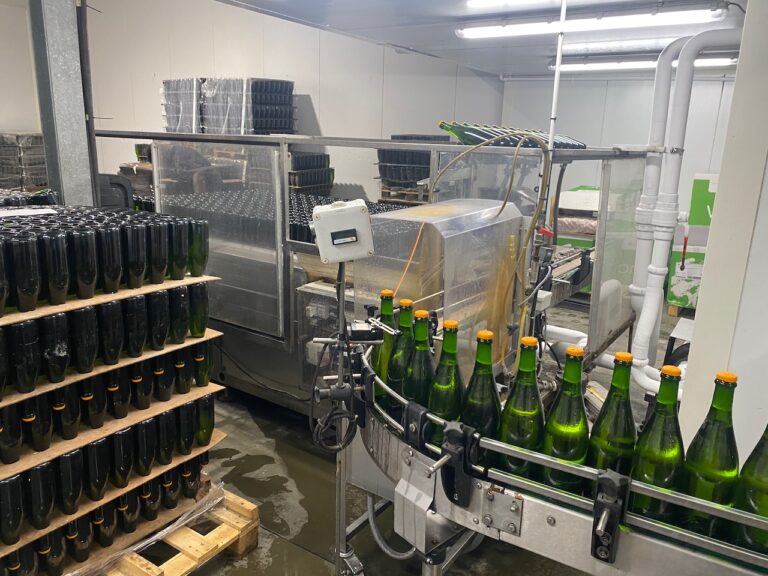
As with so much with wine, a lot of kit is needed when thousands of bottles are being dealt with.
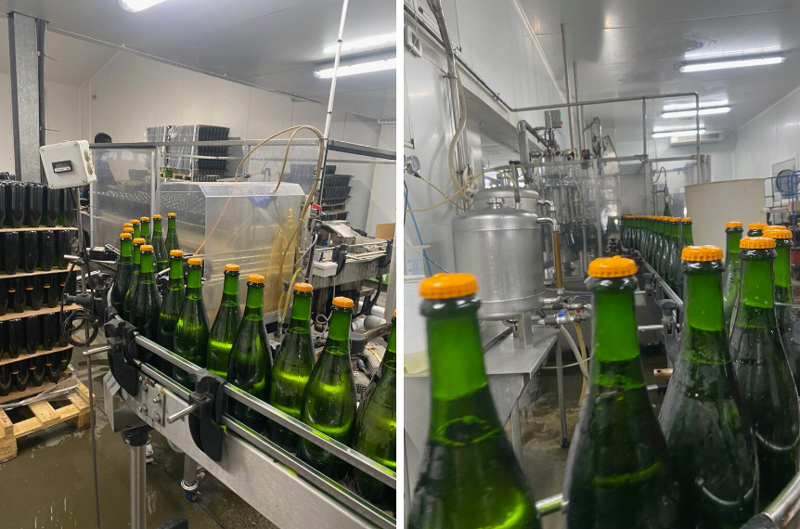
The bottles on the way to being disgorged and corked.
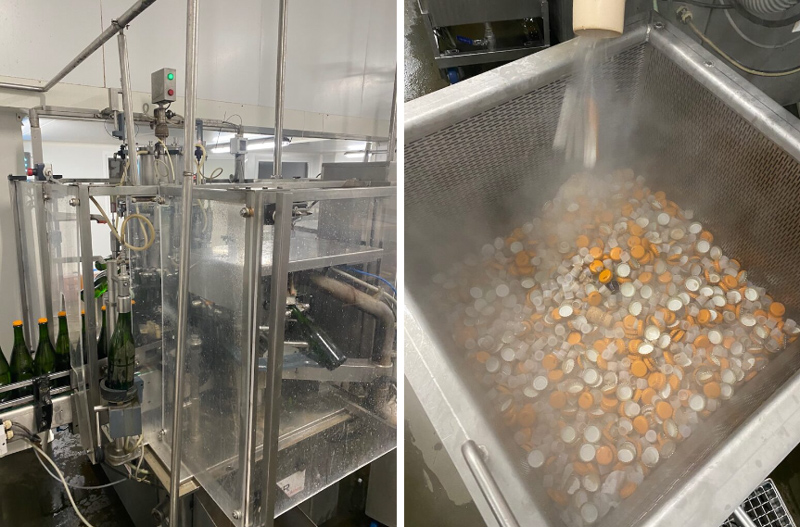
The crown caps are whipped off, like a mass beer bottle opening session. The effervescent wine bursts into life and a top up rapidly applied. The dosage is a critical element to the flavour and style of the final wine, whether it’s a Champagne, Crémant, English sparkling wine or whatever. We test this by tasting all the available options in advance.
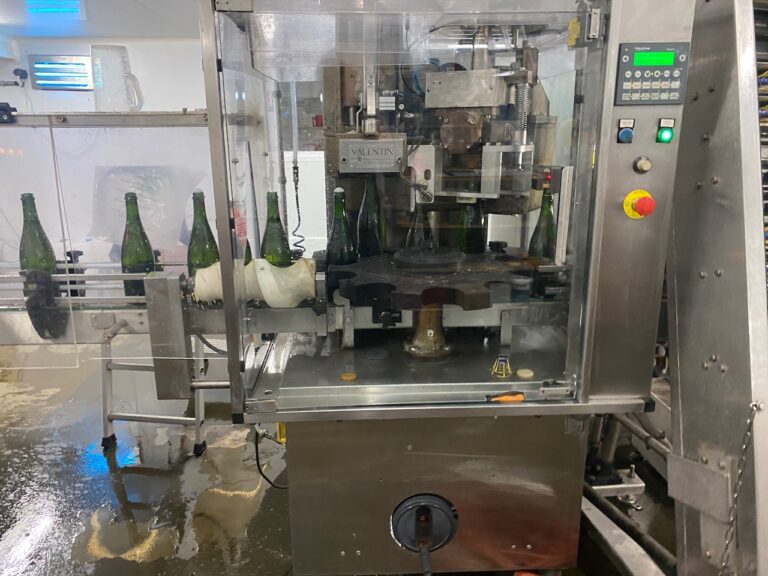
The crown cap is now replaced with a cork and a foil brace or cradle to keep the cork in place.
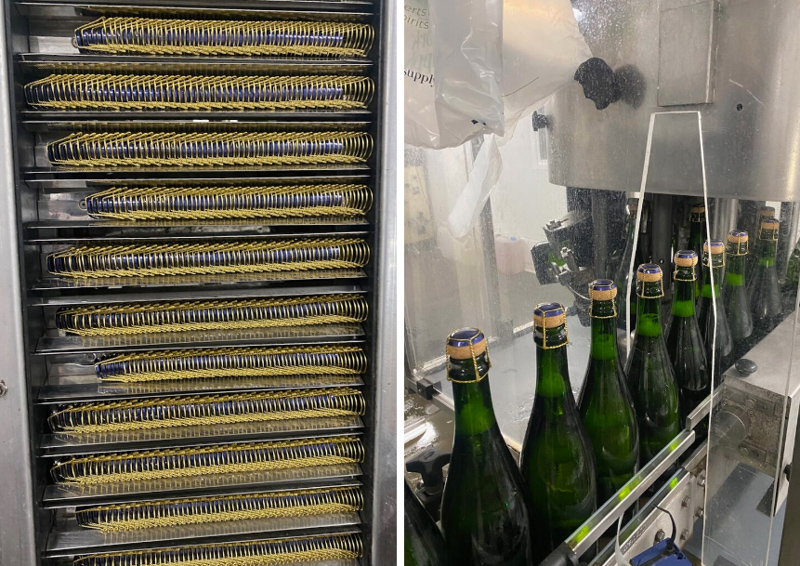
Levels have to be checked.
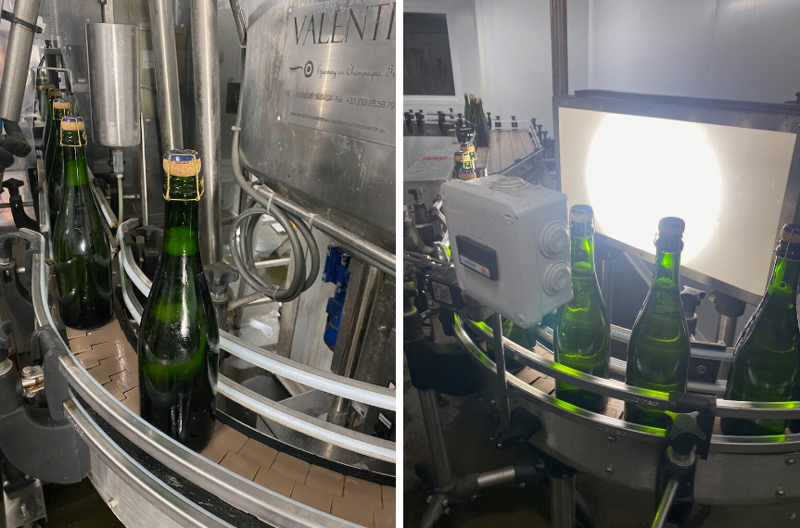
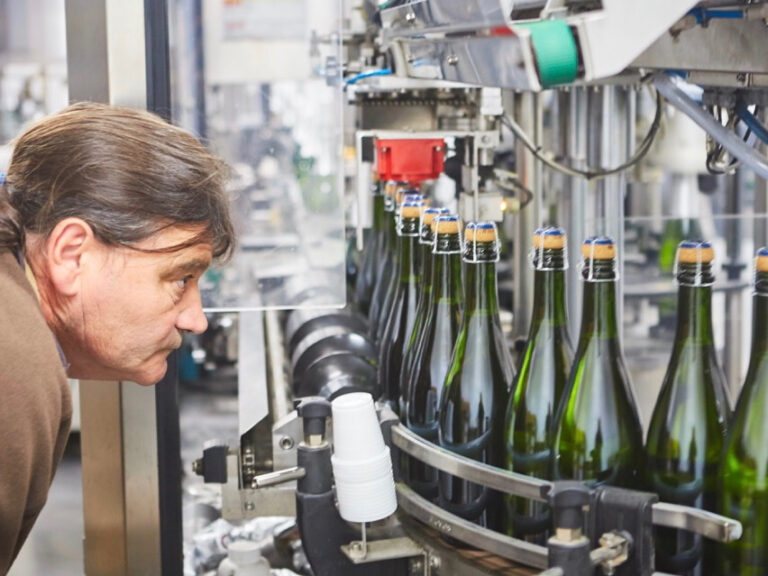
Daniel is involved from the ground up.
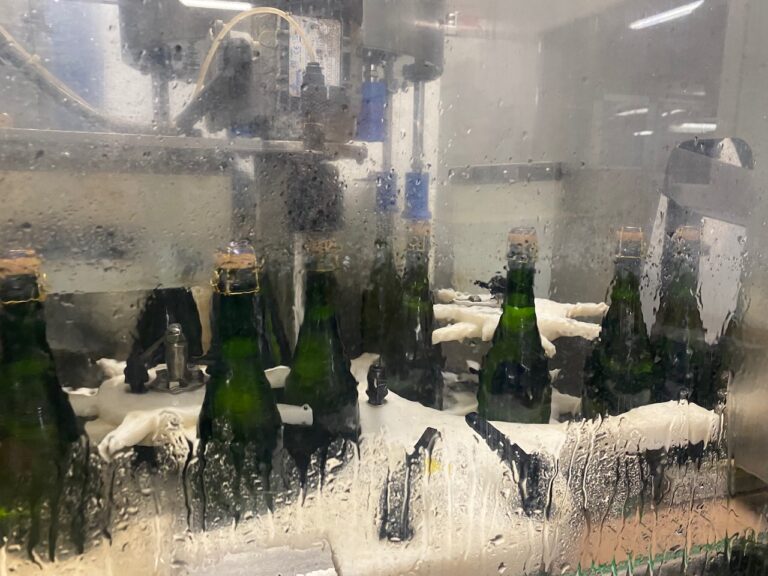
The bottles need a clean up before the neck foil and labels are added.
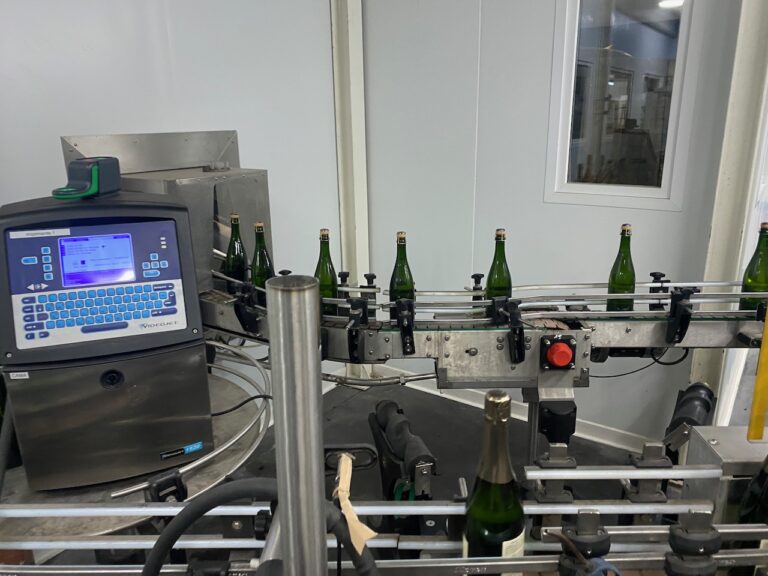
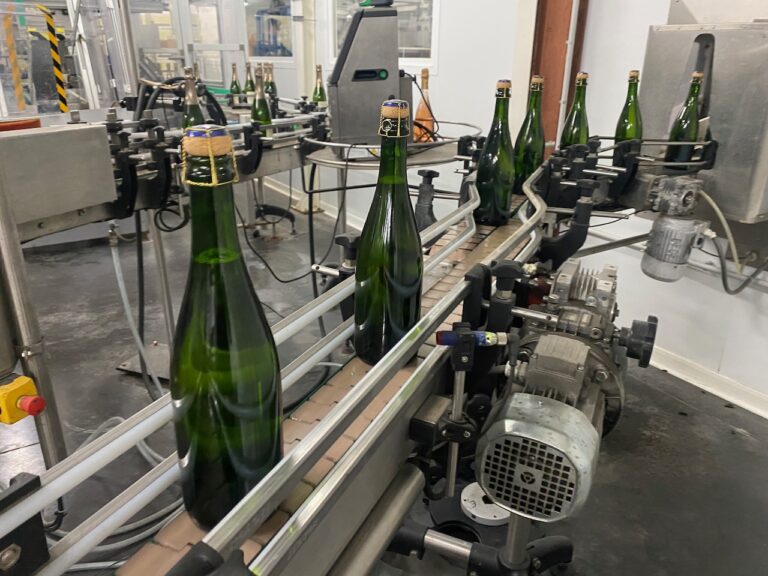
The bottles make their way slowly to the next stage while the corks start to reflate inside the neck of the bottle, if reflate is the right word.
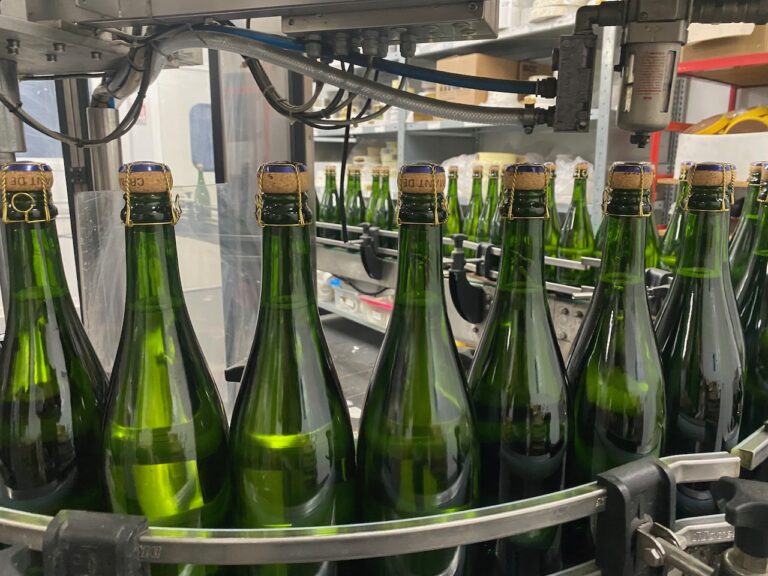
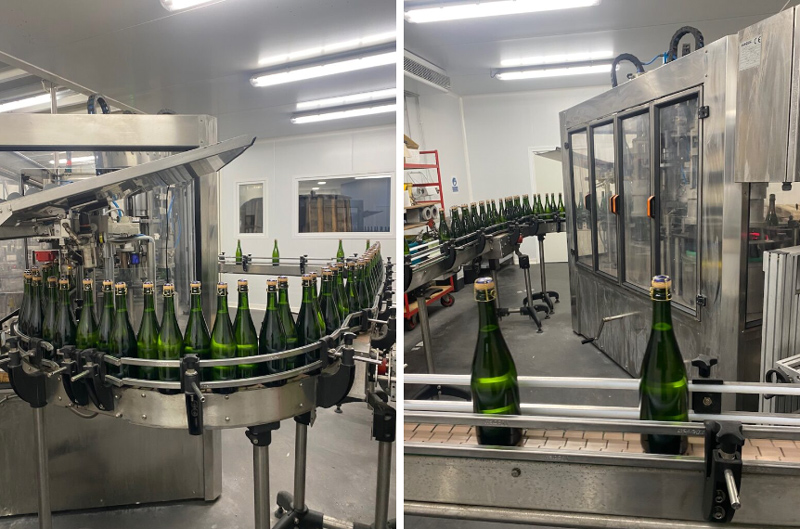
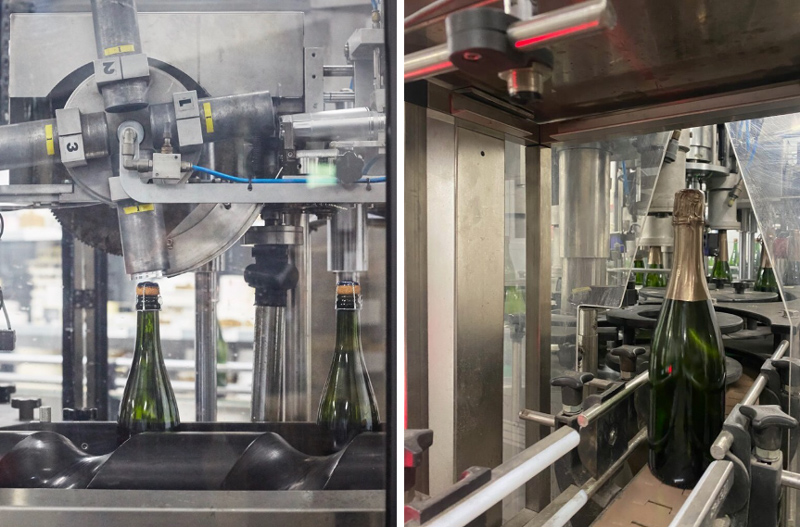
The cap that goes over the neck and head of the bottle is called a coiffe here.
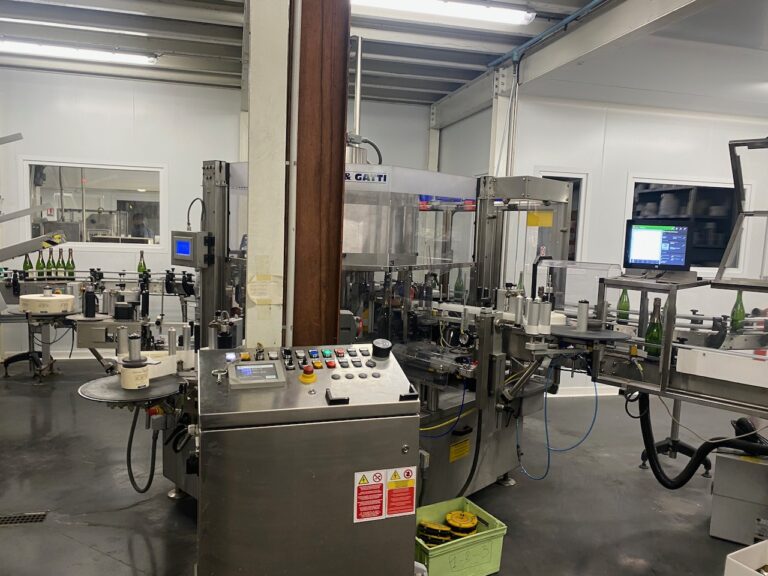
Another part that has to be spot on – and taken for granted – is the labelling.
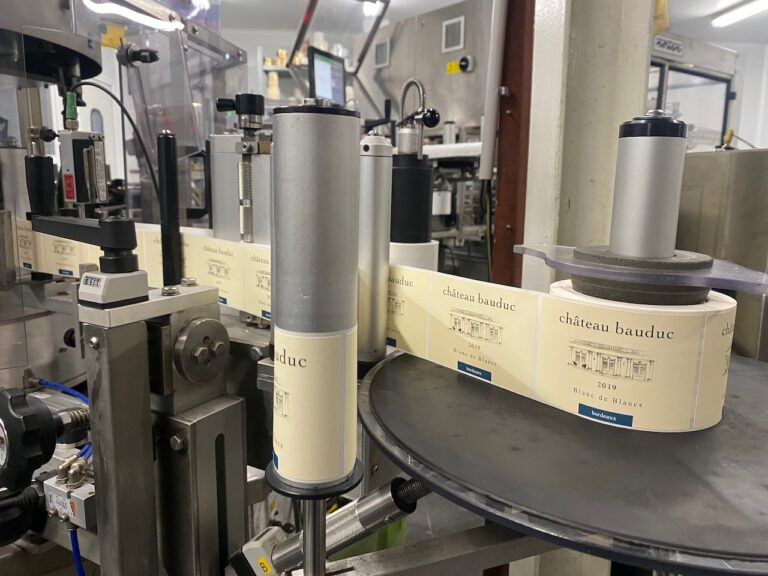
Smart front label, with a vintage on. 100% of the wine is from that plot in 2019.
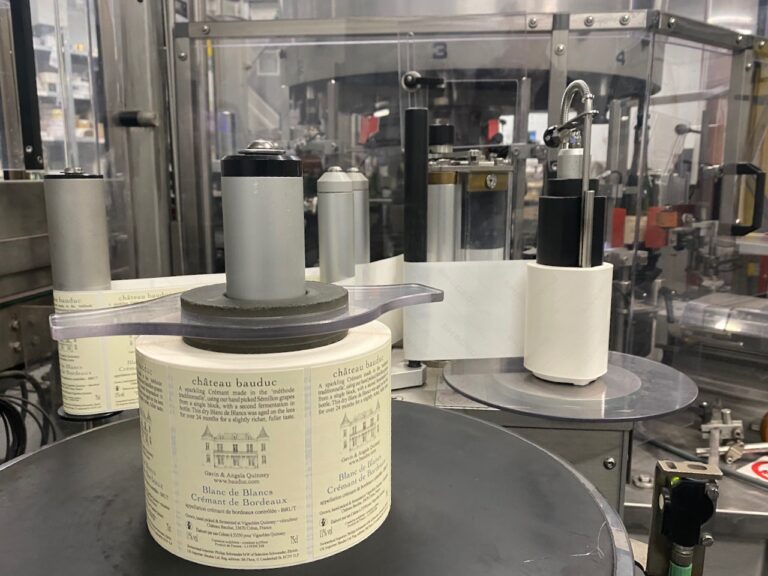
And back label, of course. When a Champagne, for example, doesn’t have a vintage (which is quite normal, of course) it’s mighty handy to have some information on the back label, I think. Such as the vintages that make up most of the blend, and a disgorgement date.
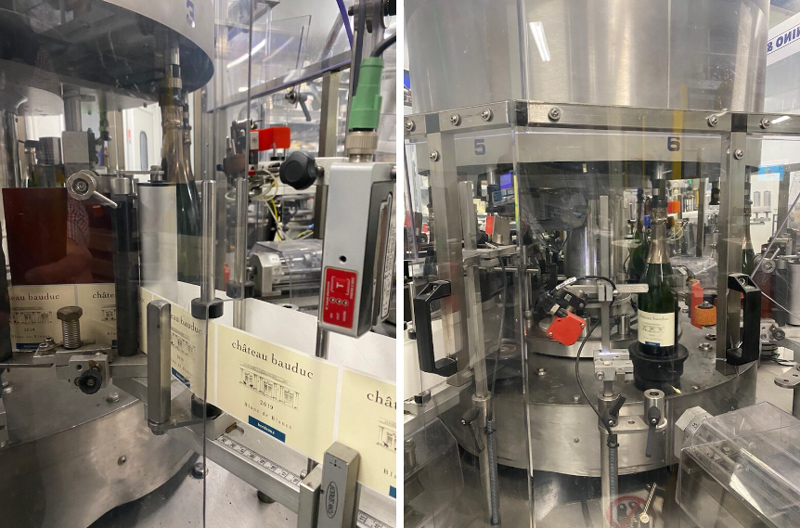
Nearly there.
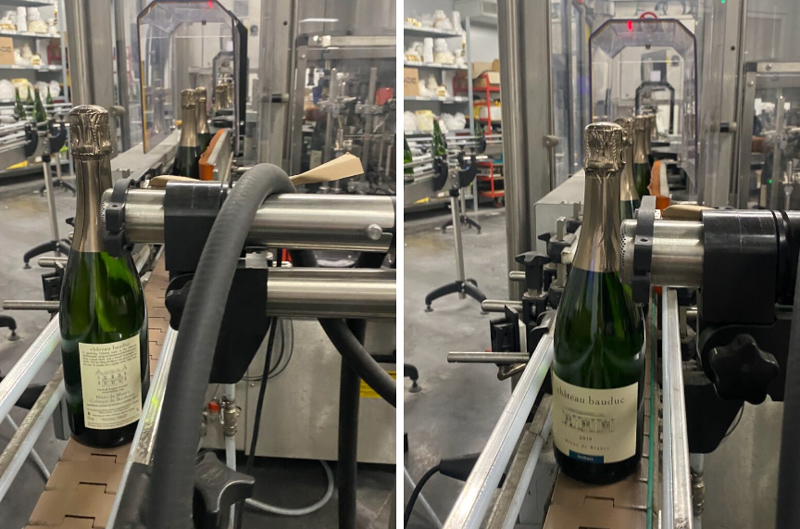
It’s actually quite satisfying to see the finished product, and after what seems like ages.
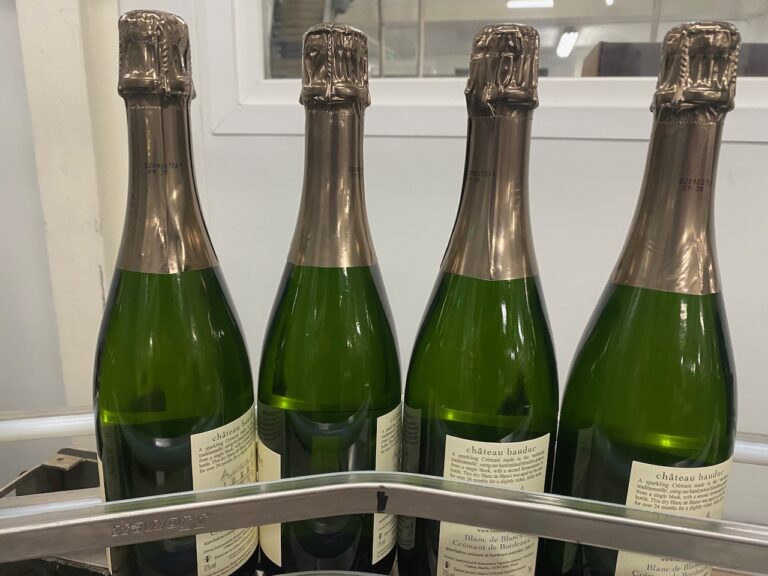
Oh, we call this version the Blanc de Blancs because it’s aged longer on the lees – 24 months, as opposed to the 15-month regular Crémant we make in some years. In 2019 we only made the Blanc de Blancs.
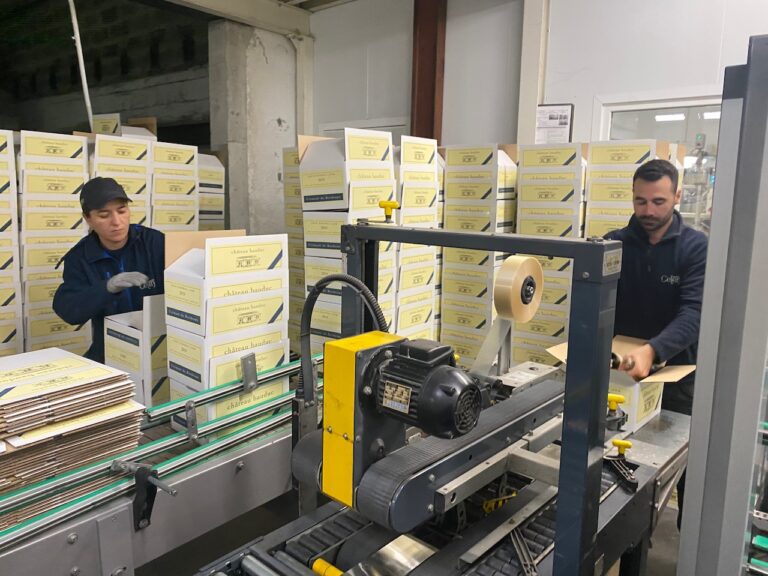
We much prefer bottles lying down in a box, over the cheaper way of packing them vertically. These specially made boxes have to be slightly larger than our normal Château Bauduc cases, to fit the bottles.
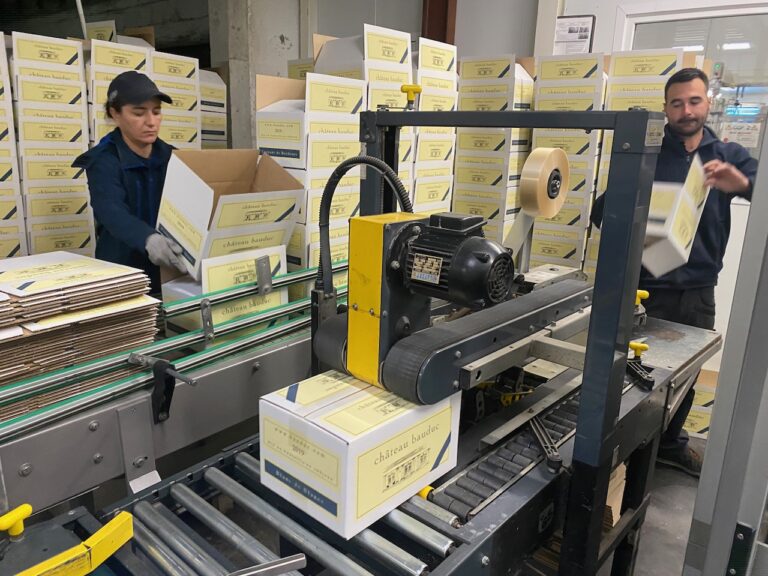
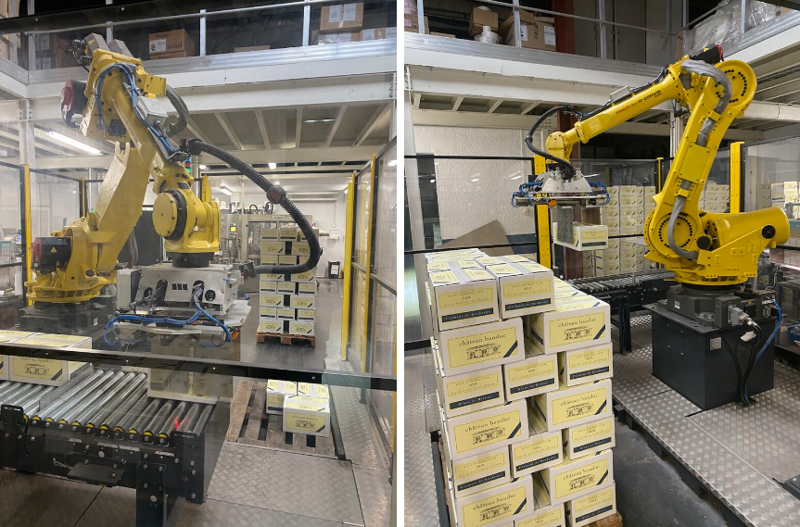
Stacking the boxes automatically. We don’t do this at home.
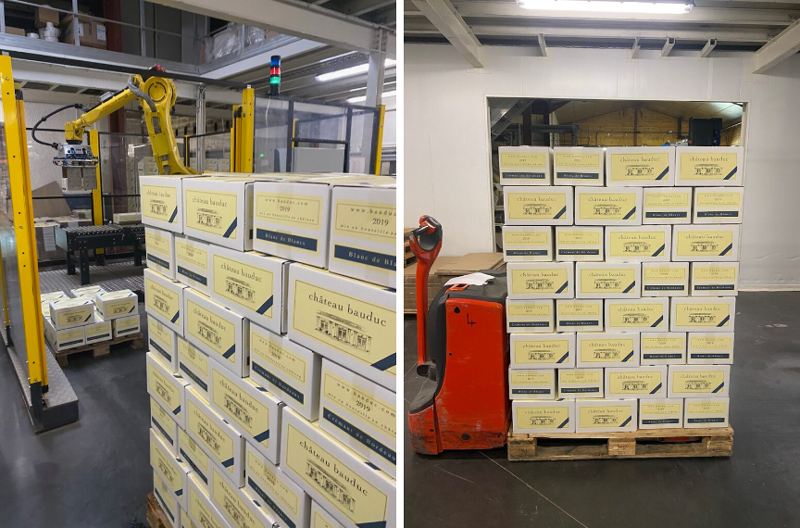
Smart pallets on their way back to Bauduc.
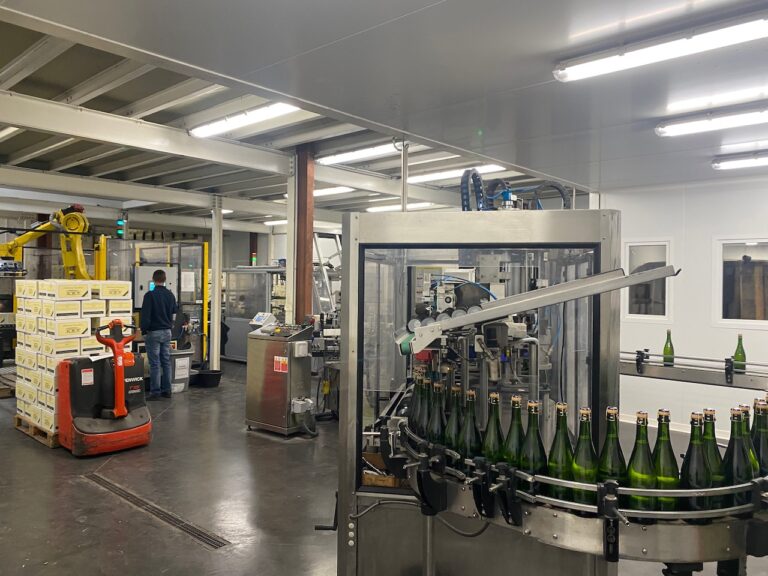
So there we have it. Château Bauduc Crémant de Bordeaux, Blanc de Blancs 2019.
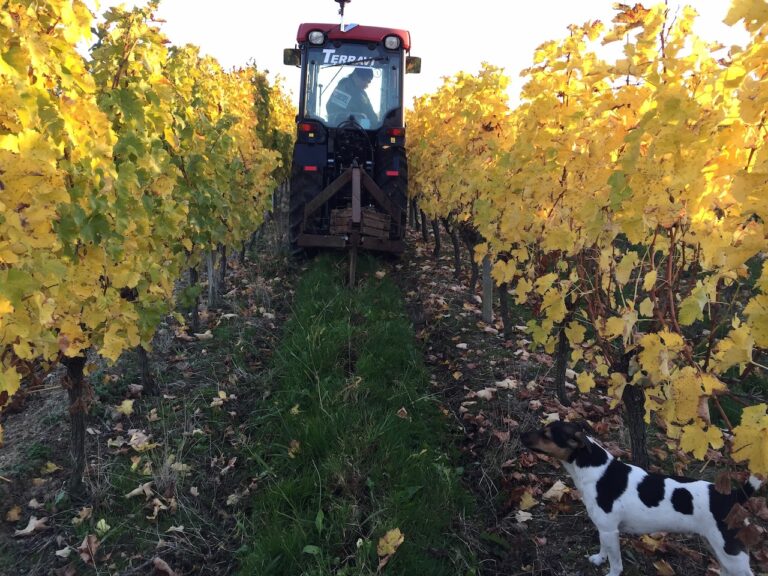
Back to the vineyard. Onwards and upwards.

